
Бесплатный фрагмент - Crete-Mycenaean culture and religion as part of the Indo-European culture of the Bronze Age of Eurasia
Solovyov Sergej Yurievich
Crete-Mycenaean culture and religion as part of the Indo-European culture of the Bronze Age of Eurasia.
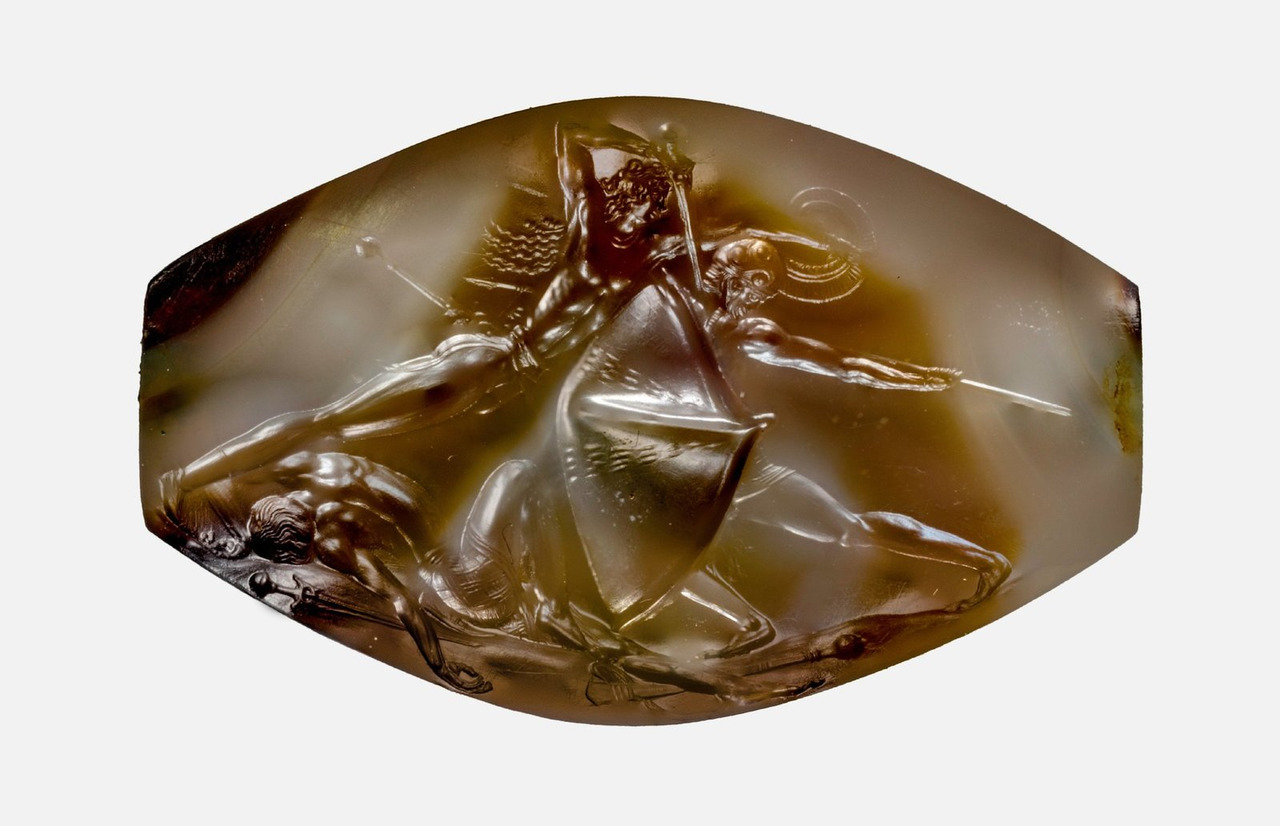
Contents. Introduction
Hellas and Hellenism. Tain meanders, acanthus and palmettes.
Date of the Treasure of Schliemann Tactics of the Achaean chariots in battle Chariot fighters of Ancient Greece of the Bronze Age.
Lenses and products from rock crystal. Discoveries of the Bronze Age of the Century from Troy, Mycenae and Crete.
On the stela No. 1428 from the grave circle «A» Mycenae, the meaning of this image, and the possible translation of the pictorial relief.
Ritual cups on a fresco from the grave of Rehmir. Buckets as one of the signs of Indo-European culture.
Trident, as one of the iconic symbols of Indo-European culture.
The discovery of iron is ancient. Ethiopians and Colchis. Ancestral home of Ancient Greece and the Caucasus.
The double helix as a cultural and religious symbol in the Indo-European culture, and its connection with Acanthus, Meander and Palmetta.
Ilios and Leto, like the deities of the sun and ice, and the gods-twins Apollo and Elisia.
Acanthus in the Middle Ages.
Griffins, lions and sphinxes in the Knossos and Pylos palaces of the Crete-Mycenaean culture. The serpent (Issaya) in the hand of Elisia is the attribute, meaning and meaning of this symbol in Indo-European culture.
Image of the Priest King from the island of Crete. Apollo and Krishna. Identification of this relief as the oldest cultural and religious image of Apollo-Krishna, as a common Indo-European deity of the Bronze Age era.
The world tree. Guardians of the World Tree — Apollo (Ill) and Elecia (Helen) in ancient Greek mythology.
Delphic oracle Warriors led by Ill in new lands and in just wars Combes with helmets of warriors and their meaning.
The oldest Indo-European myths in the tales of Hans Christian Andersen. Apollo and Elisius. Akant, Meander and Palmetta.
Swastika, left and right. The true meaning of these signs.
The Archangel Cathedral of the Moscow Kremlin. Feat of the creativity of Alevizo the New. Acanthus and Palmetta on the walls of the Cathedral.
Regular parks.
Horsemen of the Apocalypse. Eschatological views in Indo-European culture. The oldest relief with the image of the Battle on the Kalinov Bridge with a three-headed serpent.
Lamb in the Indo- European religions.
Secret signs on pedestals of garden and park sculpture of Kuskovo Park.
The conclusion.
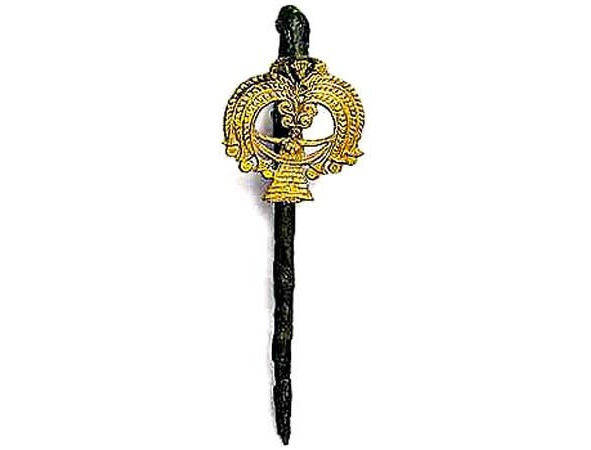
Introduction
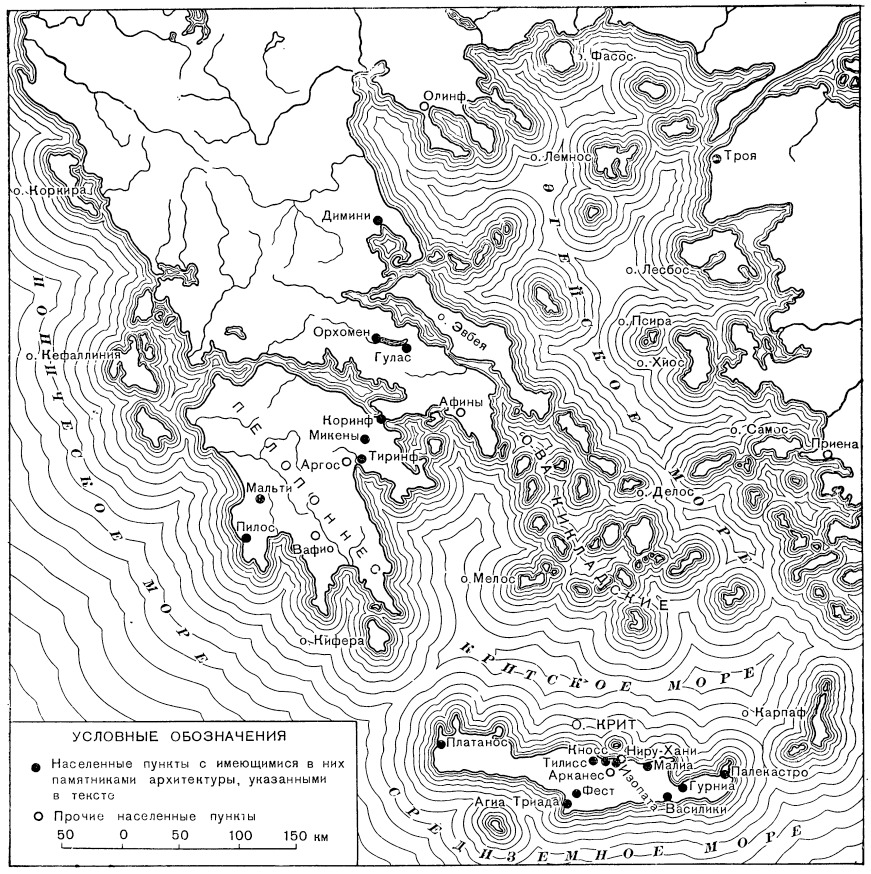
It is impossible to study the culture, art of any country outside the comprehension of the principles and organization of the religion of this country, they are an external, visible part of it. After all, culture and art, attitude to the beautiful, to
science, are derived from the customs and faith professed by the people, and therefore fully understanding the monuments and achievements is unrealistic without studying religion. The ancient Greek religious system was based on the belief in the Olympic deities, with its inherent hierarchy, this system was described by Hesiod in his «Theogony», led by a host of deities was Zeus and Hera, with his subordinate gods. On the first step stood him, Zeus, brothers and sisters (Poseidon, Demeter, Hades), the next step-their children. With each level in the hierarchy, the power of the deity changed. So there was a host of different spirits and demons. But this system was a simplified system for simple, uninitiated people, and people of a higher rank were included in the circle of initiates in various sacraments, which were left with certain information left by Plato, Pausanias, Ptolemy Hephaestion, Heraclitus, Praxitel, Callimachus. Often analyzing the information conveyed by these individuals, we can say that the popular and «elite» religion differed to non-recognition. The religion of the initiates was more demanding of the adept, and was based on the Indo-European cults of the Bronze Age that remained intact, the time of the migration of the Hellenic tribes to Hellas. It is believed that the Hellenic religion religion did not have a single organization and teaching, but consisted of community cults of various deities that were not omnipotent, but patronized one or more of the elements, spheres of human activity or geographic areas. Mythology in fact was extremely developed. This book dispels this delusion, the delusion about the entanglement and contradiction of the cult of the Ancient Greek gods, on these pages the true meaning of the numerous attributes of the ancient Greek deities, their connection with the oldest Indo-European cults is revealed. And a clear correspondence with the names of the deities of Northern Europe and Eurasia is shown, a clear and consistent similarity of the Indo-European afterlife cults, their origin and development over time is proved. The most
a mysterious legend about the consistency of fire and ice, which gave birth to this union, and what kind of deities personified it. True mythology and the circle of deities, their functions, meaning and origin, kinship, become clear and consistent, explains the seeming incredible philosophers of ancient Greece, the repeated birth of deities on Earth among humans, as well as repeated deaths of deities. The true number of deities of ancient Greece is proved, the connection of deities with the World Tree and the afterlife. The meaning and meaning of ornaments of antiquity-double spiral, acanthus, meander, palmette, swastika are revealed. The mystery of the origin of the name of Hellas and Hellenes, the time of the foundation of Mycenae and the date of the Trojan War, the history and the true meaning of the founding of the Olympic Games of antiquity, which was explored in connection with the Hellenic religion. The importance for Ancient Greece of the Delphic oracle is justified, and to whom the divinities were sought, who of the deities disclosed the secrets of the future. It shows the development of technologies opened by Indo-Europeans-combat chariots, optics, and iron. It was very important and necessary to show and prove the cultural and religious community of Indo-Europeans of the Bronze Age. It would be difficult and wrong to affirm ethnic identity, but the similarity, and often the identity of the most important attributes, ornaments, mythology that survived to our time four thousand years later, all this is the surest evidence of these statements. Many of the information came to our time in a distorted form, due to the fact that the elect received knowledge of the divine nature in the Antiquity, and this was due to the initiation procedure, Pausanias explicitly states in the «Description of Hellas» that he knows how to explain the ram near with the statue of Apollo as an attribute of a deity but can not reveal this mystery of initiation, because he has sworn not to reveal true knowledge. The most famous models of the origin of Indo-Europeans can be conditionally divided into European and Asian. Of the European most common among linguists and archaeologists is the mound hypothesis suggests that the ancestral home of the Indo-Europeans was the territory of the Northern Black Sea coast in the interfluve of the Dnieper and the Volga, and they themselves represented a semi-nomadic population of the steppe regions of the modern east of Ukraine and southern Russia, who lived in these places in the V — IV millennium BC. e. With this you can agree, but adding that it was the end of the III beginning of the II millennium BC. e. according to all archaeological finds, dates to the beginning of the mass migration of Indo-Europeans to Greece, the Front and the Lesser Asia. And it is precisely this time that dates from a culture stretching from Denmark to Western Siberia and India, and possibly from China. About this, despite some difference, the finds of chariots, the massive finds of bronze swords in Greece and Denmark, the lobed temporal rings of Eurasia, Denmark and Troas, the findings of vessels in the form of a swan (ducks) in Mycenae and the Urals, ornaments in the form of a double helix, and burial of the sacred rulers in the tolots, which are found from China and the Orenburg region to Sweden. However, the differences were also there, and obviously, a religious property, in the difference of some attributes and ornaments. Meander and swastika in Denmark, Greece in the Bronze Age for religious purposes were not used, mass meanders and swastikas were depicted in Greece only in the era of geometric style, which is obviously associated with a change in religious beliefs, which is understandable by the invasion of Dorians. So it turns out that part of the Indo-Europeans came to the Volga region from the Far North of the Europe, as are the findings of labyrinths on the territory of the Russian North, the similarity of the mythology and fairy tales of Germany, Scandinavia and the north of Russia, Scene associated with the cult of the swan. The epics of the Finnish peoples of Kalevala are also close to these legends.
Hellas and Hellenism. The mystery of Meander, Acantus and Palmetta
According to the mythological poem «Theogony» written by the poet Hesiod, Aphrodite was born near the island of Kiefer from the seed and blood of Kronos of Uranus, which fell into the sea and formed white foam (hence the nickname «foamy.» The wind brought her to the island of Cyprus (or she sailed there herself because she did not like Kiefer), where she, who emerged from the sea waves, met Ora.The classic Aphrodite appeared naked from an air sea shell near Cyprus — hence her nickname «Cyprid» — and reached the shore on the sink. tied diadems crowned with a golden crown, decorated with a gold necklace and earrings, or, as it is possible, this is due to the popularity of the cult of the goddess in Cyprus. «According to Homer, Aphrodite was the daughter of Zeus and Dion.» According to Epimenides, she was the daughter of Kronos. was Nereus. Aphrodite had many names, and Aphrodite was not a name, and one of the names, like Athena Tritiginea, is only one of the attributes of divine Wisdom. According to the Greek myth set forth by Kuhn, there was no time in the city of Orhomena (the Boeotia region) ruled the ancient tribe minium s king Athamas. From the goddess of the clouds of Nephela, he had a son, Fricks, and a daughter, Gella. These children were hated by Aamant’s second wife, Ino. In the lean year, Ino cheated her husband to sacrifice them to the gods to end hunger. However, at the last moment, Fryx and Gella rescued from the priest’s knife a sheep with a golden fleece (wool), sent by their mother Nephel. The children sat on a ram, and he carried them through the air far to the north. Gella (Ella) fell into the sea during the flight and drowned in the strait, which since then has been called by her name the Hellespont (Dardanelles). Frix took the ram to Colchis, to the Caucasus, where he was raised as a son by the local king Eet, son of the god Helios. Herodotus says in her «History» about the Kolkhos that they are natives from Ethiopia. Now about the proper Hellenes and Gelons Where did the Greeks come from? Taylor says that the carriers of the minyan ceramics, the ancestors of the Achaeans, came through
Asia Minor from the steppes of Eurasia. Part of the people, obviously, remained on the ancestral home. Herodotus speaks of two Scythian tribes, Budins and Gelons «Budins are a large and numerous tribe, all of them very light-eyed and red, in their region a wooden city is built, the name of this city is Gelon.» The length of the wall on each side is 30 stages, it is high and and they have wooden houses and temples, and there are temples of Hellenistic gods, decorated in Hellenic wooden statues, altars and nases, and every three years they hold festivals in honor of Dionysus and fall into a Bacchic frenzy. Are the Hellenes who left the harbor and settled at the Budins, and they speak the language in part Scythian, partly Hellenic, IV, 109. The Budins speak the language not the same as the Gelons, and their way of life is not the same. the nomadic people, they are the only ones who live here, they feed on cones, the gelons are farmers, they eat bread and have gardens, they are not at all like appearance or skin color. «The Greeks, however, call the Budins gelons are called wrong. Their entire country is densely overgrown with diverse forests. And in the thickest forest there is a large and wide lake and around it a swamp and a reed. In this lake, otters, beavers and other animals with a square muzzle are caught; Their fur is worn around the edges of fur garments.» (HERODOT) You see, GELONS, but in Greek, ELONS sounds true, or rather Elony, the first» G «can not be read, as in the name of Helen. And the city was not called GELON, but ELON or ILON, that is almost ILION, as in the Trojan land. Gelons, and more correctly, Elon, or the same Hellenes was a language similar to the Greeks. That is, obviously, antiquity, at the beginning of the 2nd millennium BC. The ancestors of the Hellenes came from this region to Greece-Hellas. Later, Strabo mentions AHEEV (remember the Achaeans), in many respects because the autonomous Greece in the Roman sources was called AHAYA, about AHAYES writes Strabo that they were engaged in piracy and seafaring. This he emphasizes the identity of GELONS and AHEYES for his contemporaries, inhabitants of the Roman Empire, who could not understand the relationship of the two peoples. Consequently, it is possible that these GELON-ELLINS-began to be called ALANS. In the funeral ceremony of the Alans, among other things, there is a funeral canoe. Alans — The Ossetians buried the dead in towers, similar to the Mycenaean tolosses and the Persian towers of silence, and without the inhumation, that is, without burial in the ground. The burials were of a group character. The last burials in the towers were in the 19th century. Now the Ossetians lived very far from the sea and large rivers, hence this is a very archaic custom. The funeral towers of the Ossetians are very much like the dome of Mycenaean tombs. Greece does not dispute the connection with the Caucasus (Let’s remember the myth about Prometheus). The connection in the Greek myths with Colchis, namely the Colchis Ethiopians, and the fact that Herodotus calls the Colchian Ethiopians out of Africa, and emphasizes the cultural kinship of the Colchian Ethiopians with Egypt. This is what Herodotus says: 104. After all, the Colchians, apparently, are Egyptians. … Having become interested in this, I began to ask about this relationship, as in Colchis, so in Egypt. The Colchians retained clearer memories of the Egyptians than the Egyptians of the Colchians. However, the Egyptians told me that the Colchians derive their origin from the soldiers of the Sessostrian army. I myself came to the same conclusion, because they are dark-skinned, with curly hair… Only three people on earth are subjecting themselves to circumcision: the Colchis, the Egyptians and the Ethiopians… the rest adopted this custom among the Egyptians.»
Herodotus told the truth. Today in the territory of Abkhazia (Colchis) in the villages of Adziubzha, Merkul, Chelou, Thin, Achandar still live black descendants of Egyptian soldiers. The expedition of the Argonauts, which also took place in Colchis. The soothsayer of the Greeks during the Trojan War was called Kolkhant or Kalhant, Kalkhas-Kolkhidets. Relations between the Achaean Greeks and the Kolkhs were systemic. The Greeks regarded the Colchis as sorcerers. Medea-witch, well, let us recall the testimony of Herodotus about the identity of the Ethiopians and the Colchians. And there was the participation of the Ethiopians in the Trojan War, this is mentioned in the «Ethiopian». Legends of Elena the Beautiful remained in Eurasia. Elena the Beautiful Princess. The golden kingdom is the queen. Elena the beautiful. Elena the Beautiful princess. She asks Ivan Tsarevich three tasks, then marries him. We compare the juvenile apples of Russian fairy tales and the garden of Hesperid. And in another fairy-tale place she marries Vasily-Tsarevich. Tales of Afanasyev. All this is in Russian fairy tales, recorded in the 1820s of the 19th century. About Homer at that time in Russia, simple peasants could not know. The plot of the tale is very similar to the plot of the matchmaking of the suitors to Elena Spartan, with the beginning of the Trojan War. The oath of grooms also becomes understandable, because they owed their lives to a lucky challenger. And also the dispute of the three goddesses about beauty. «Beautiful» read the inscription on a golden apple. They argued and asked the court of Paris Athena, Hera, Aphrodite. But where on the Peloponese blancks would come from? Below is a photo from the Pushkin Museum of Fine Arts. Pushkin is a bronze statuette. It is depicted, as it is said, Aphrodite with Eroth, but with a sign
known from the myths belonging to Athena-Pallas, the creation of all that exists by the power of his mind-the expanding branch from her head. Also on the large photo is a palmette-sign of rebirth from the ways of death. Acanthus, palmetta and meander (Μαίανδρος-translation from Greek is «Μαί-I ανδρος-man», or if the double vowel letter was not written in Greek-Mαία — the birth of ανδρος- (person) or simply the birth) is the most famous decor of antiquity, and its meaning as the meaning of birth and life. Probably, the meander occurred as a simplified image of swans, on vessels. Swans are connected in myths with the birth of man and are associated with Apollo and Aphrodite. Photo below. Artifacts were found in the marshes of the Urals, 2 thousand BC.
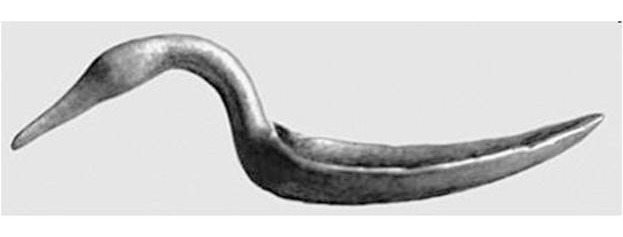
Meander is the sign of life. Meander is known on images and vessels from 2 thousand BC. Below is a vessel with a meander. The exhibit was found in the steppes of Orenburg 2 thousand BC.SHM, Moscow.
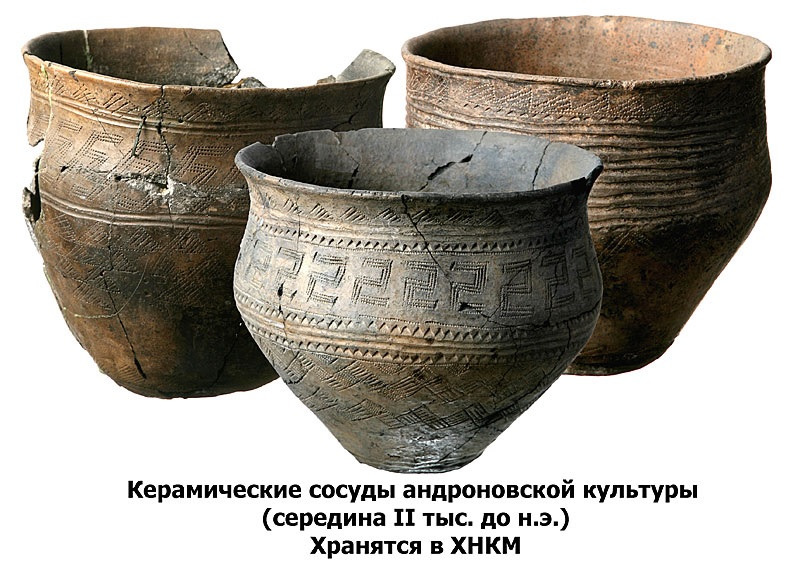
Acantus is a sign of sorrow and death. Photo below. And, then already in baroque, in garden and park culture, for example in Kuskovo, this ornament was used as a pedestal for busts of famous and dead people.
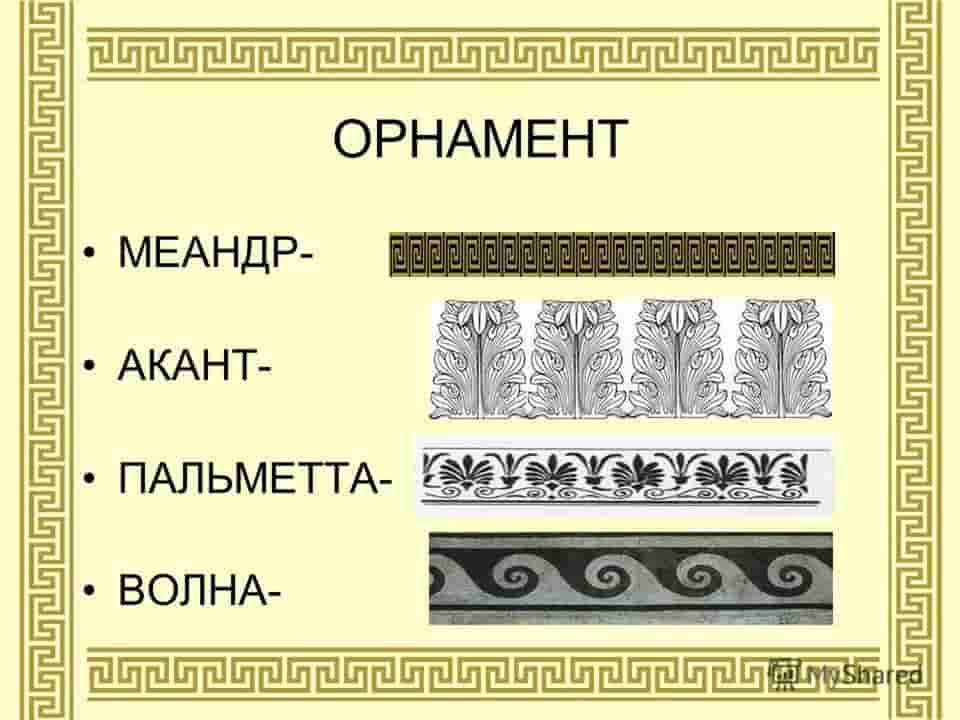
A palmetta, the hope of resurrection. Photo above. Acanthus and palmettes were used on all orders of the Doric, Ionic and Corinthian columns, as well as on the vessels of antiquity. That is, Aphrodite-Ella is not only a goddess who gives birth, but also gives a resurrection. Acanthus and palmetta are repeatedly depicted on acroteria. That is, acanthus and palmetta are inextricably linked with the cult of Ella-Aphrodite.
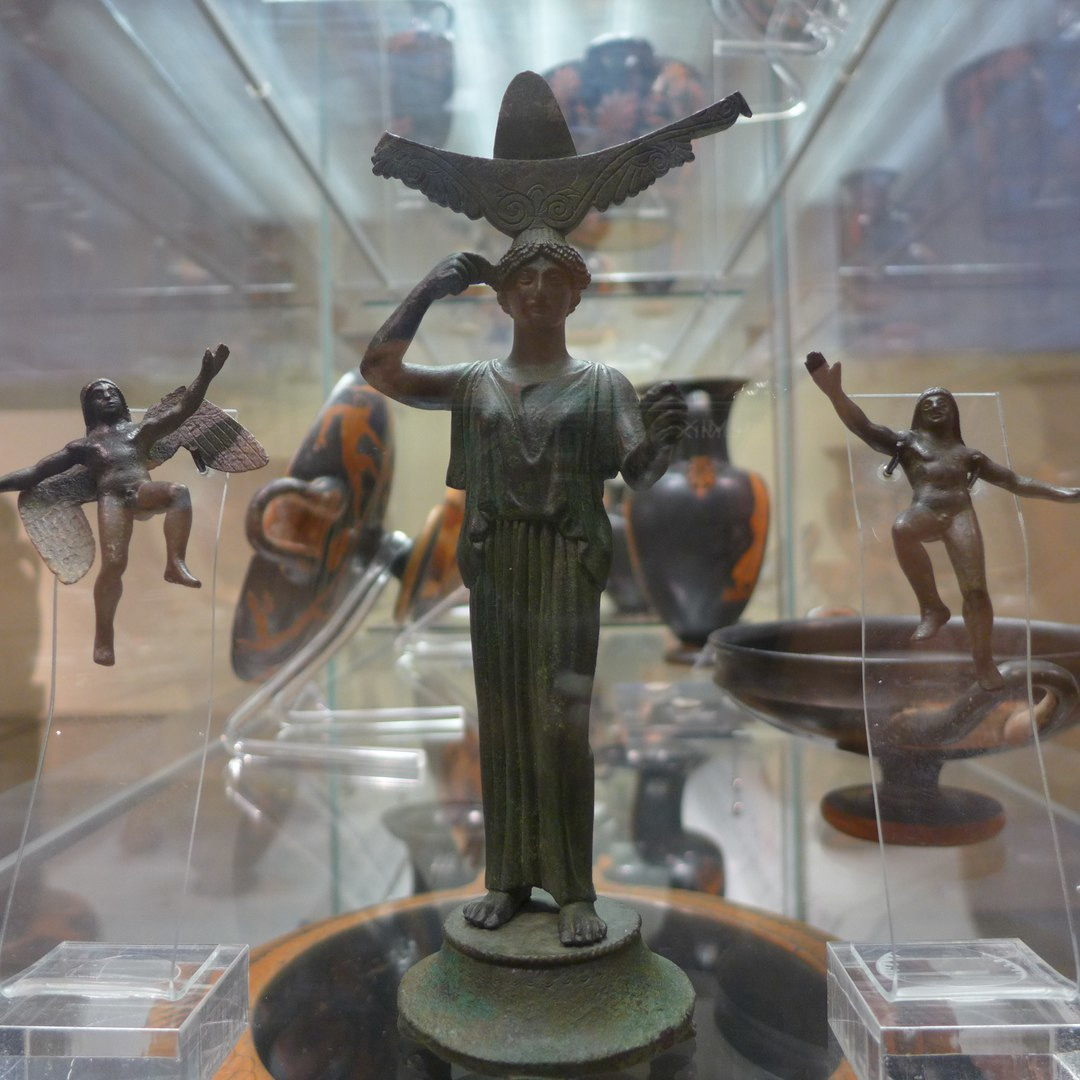
And Paris-Alexander, apparently was the king-priest of this deity, and accordingly the favorite of Aphrodite (Elena) -Ella. That is, the kidnapping was thought out by the Greeks much later than the capture of Troy, when they forgot about the identity of Elena and Aphrodite. At the Athens Museum there is a gold decoration of the 16th century. AD with a similar plot. As you can see in the photo, the goddess generates everything with the power of her mind. On the photo below, there are capitals of columns with acanthus and palmetto. These were sacred signs. In the case of applying the Doric order, the acanthus was painted on the frieze.
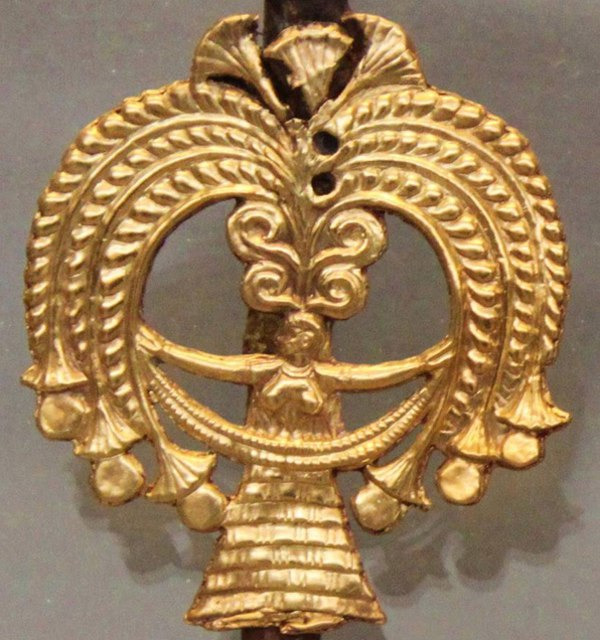
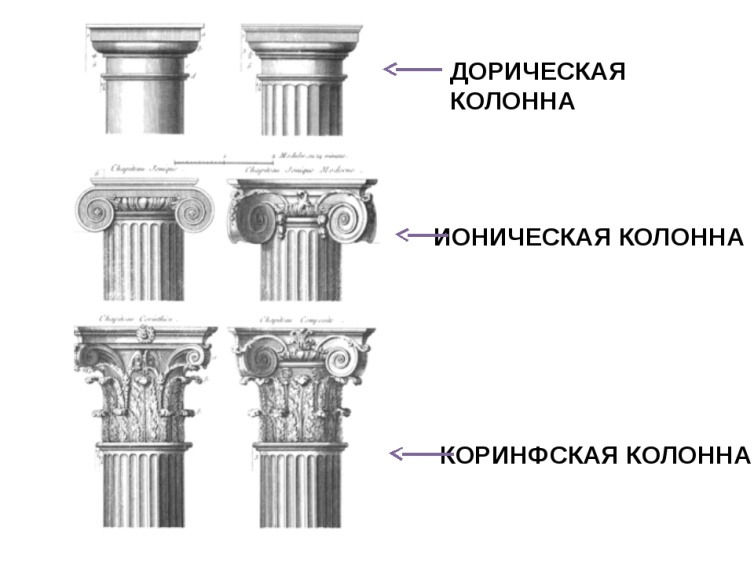
As can be seen from the epithets, the identity of Athena and Aphrodite is obvious. Below in the photo, as it is said, a lead plaque from Sparta, and it is said that this is Artemis-Oryphia. Images. as can be seen in the images of Athena, Aphrodite.Ilyphia (also Eilithia / Ilithia, dr.-Greek Εἰλείθυια, Mycenae e-re-u-ti-ja, Elifia — in ancient mythology, the mother-goddess, usually
appears as a saving, but sometimes as a hostile force in childbirth. Without her help birth can not happen. Sometimes Ilfia is a simple attribute of Hera or Artemis, sometimes an independent being. According to Hesiod, Eliphia (Elisia) is the daughter of Zeus and Hera. According to the Cretan version, the daughter of Hera was born in Amnis (the Knaeus region). In Amnis, however, a sign of Linear Letter B was found with the mention of the sacrifice of Ilifia. Homer pointed out that there were several Ilifi (Elysius), whom he calls the daughters of Hera. However, Homer and Pindar mention it in the singular. In Olena’s hymn in honor of Ilifia it is said that she is older than Crohn, she is likened to the goddess of fate, and she was the mother of Eros (that is, the Creator-Love).
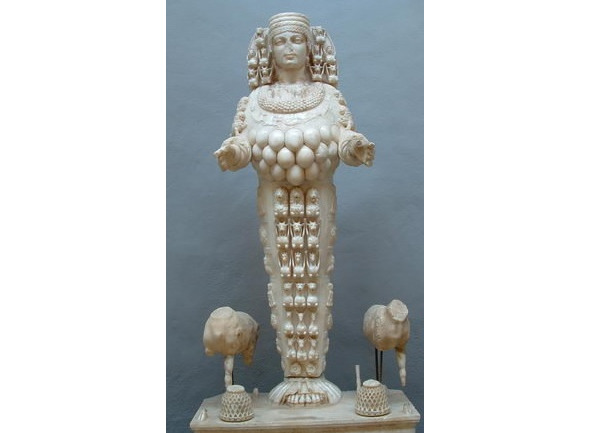
Just as interesting is the image of Artemis of Ephesus, as proof of the identity of the goddesses of Artemis, Elisia, Persephone, Aphrodite, Athens, because the meaning of this sculpture is the pictogram, meaning the meaning is ciphered in sculpture, when most believers could not read, and the deity sculptures had to be the most informative, that is, this image means «Nourishing, enlarging, all-good, all caring.» That is, this attribute just goes beyond the usual meanings associated with the image of Artemis-hunters and virgins.
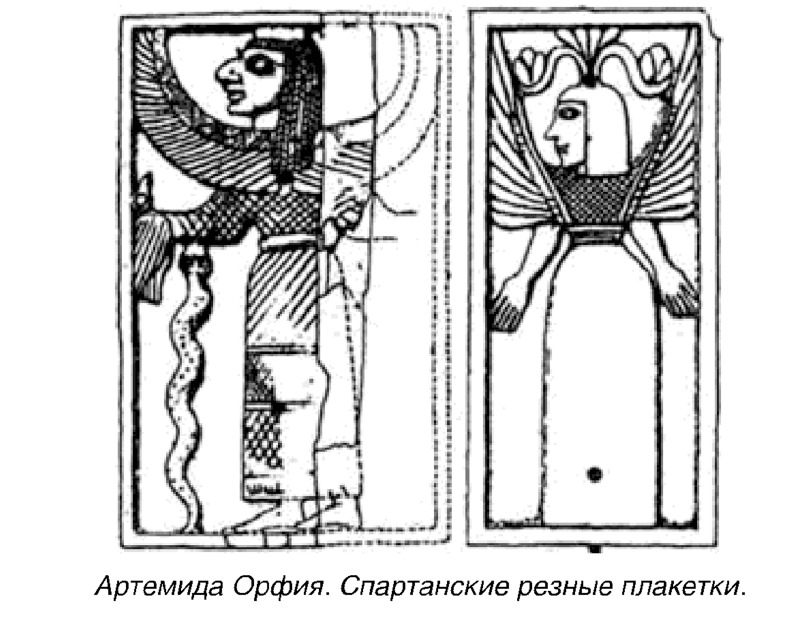
Corinth, (Greek-Greek Ϙόρινθος, Greek Κόρινθος, Corinthos-Ancient Greek polis and modern city on the Corinthian isthmus, Corinth can be translated from ancient Greek as the city of Cora, Virgin.) Later, in the classical period, this beautiful city vied with Athens and Thebes in exchange and control of transportation through the isthmus… There was a magnificent temple dedicated to the goddess Aphrodite on the acropolis, according to some sources, there were more than a thousand priestesses in the temple. A priestesses of the temple of Aphrodite always wore long hair, and the longer they were, the better They never wore handkerchiefs, bedspreads or anything else that covered their hair, while all women in Greece wore dresses that covered them from head to toe. In Corinth, Isthmian games were held. In Corinth, the goddess Athena was called Gelotis — Hellötis, BOT-reads, as always-ELLOTIS and in her honor arranged the feast of Hellotia (Ellotia),
as well as the Athens-Europe holiday in Crete: «a glotoid (ellotid) was a wreath woven from a myrtle wreath with a circumference of 20 cubits and that it was borne out at the festival of Hellotia (Elliotia). In it, they say, they bore the bones of Europe, which [also] was called the Hellottida (Ellotida). Hellotia (Elliotia) was also governed in Corinth.» (Athen XV 678b). But perhaps the Word Illothis-Ellotis is a compound. But the root of Illa Ella is understandable. According to the Hittite sources, there were two areas-Taruisa and Vilusa, but more correctly Ilusa. And Paris-Alexander, apparently was the priest of this deity, and accordingly the favorite of Aphrodite (Helena) -Ella. That is, the kidnapping was thought out by the Greeks much later than the capture of Troy, when they forgot about the identity of Elena and Aphrodite. If you remember the special honor in Aphrodite of the goddess Aphrodite, and that according to Homer Aphrodite was on the side of the Trojans, it turns out that the name Ilion dates back to the real name of Aphrodite, Elle-Ille (one must understand that in the Greek there is no letter «E»). In the retelling of the Trojan War, there is a hint that the main thing for the capture of Troy was the return to the Greeks of palladium, that is, the sacred image of Athena. And then again, the connection with the myth of Gelle (Ella) and Fricke is slipping. And it seems that the first Hellas (Hellas) was a Trojan. After the Trojan War, Neoptolemus took Andromache and took part of the Trojans to Thessaly. The first area, called Hellas, was in Northern Greece. Now, more in detail about Persephone and Perseus. So, the meaning of the word «Persephone» is «Perseus + phonos, that is, the sound or voice.» That is the voice of the dead.This is not even a name, but an epithet, like Tritiginea for Athena. Perseus, his birth is also associated with the cult of the dead He was born in a tomb from a deceased mother, or taken for a deceased mother, Danai.The exact translation of the word
«Perseus» is not yet obtained, but the meaning, as in the analogy with Persephone is clear, and is connected with the dead. The cult of Persephone is associated with Eleusis, with the famous Eleusinian mysteries. And then the fun begins. The root of «Ela-Eli» is the name of the goddess Aphrodite. That is, the city is named after the goddess Ella-Aphrodite. And Persephone is only one of her epithets. The connection of Aphrodite with the cult of resurrection is clearly visible in the photos of Acroteri. But the legends about Persephone to the goddess of the dead from the Greeks did not survive in the epics, because they were part of the Eleusinian mysteries and were secret. With Elesia, the name of the Champs Elysees, a place in the next world, where the chosen ones fall, is also connected, that is, these fields belong to Elisia, Ἠλύσιον πεδίον-the Champs Elysees, the name of Lysias the next, and Alexius the resurrected. Therefore, here you can reconstruct part of the fairy tales of Mary-Morevna and Mary-Iskusnitsa, that is, the Mara-goddess of death. But the name of the Iranians-Parsa or Persians comes to the aid. The self-name of Iran in ancient times was «Arya-nim», the country of Aryans. That is, Persian-Parsa refers to religion, or rather to the rite of burial. The photo below shows the birth of a goddess from the waters of the sea, from the flower, and depicts the symbol of the revival of the palmetta. Below is also a helmet made of gold with an acanthus-symbol of rebirth.
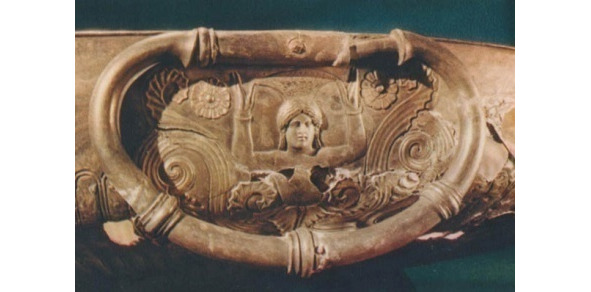
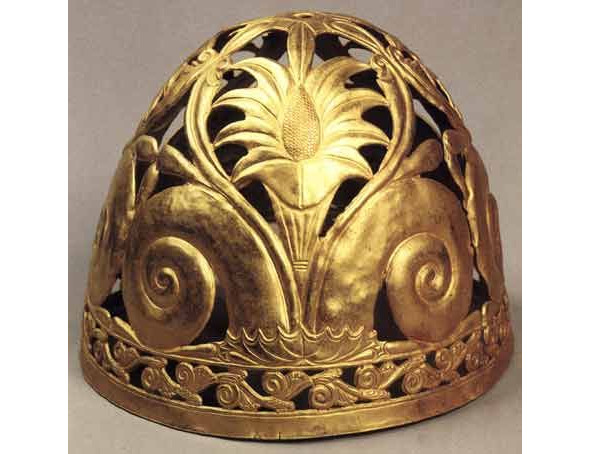
In the photo below, it seems, but in the center there is either an inflorescence, a ready-to-blossom, or an egg, as a symbol of a new life… So this obviously symbolizes the hope for the resurrection of the Goddess worshiper.

It is possible to reconstruct the meaning of the Eleusinian Mysteries as the greatest mystery of Ancient Greece, the Hellas-the True Name of the Mother Goddess-Ella-Elena, and the proof that both Hera, and Athena, and Persephone, and Artemis, (known numerous images of Artemis-Orphia, and from her the head grows a flower) and Aphrodite is only her incarnation. as she manifests herself in the world of people. And, the most important, can be considered proven. What and the self-name is Hellenes. and the name of the Hellenic country, this is the manifestation of the Hellenic belief that they are created by the goddess Ella, and believe in their resurrection after death, and are under her protection. The name is Helen in Greek — from ancient Greeks. ἐλένη (helen) — «torch, torch». And everything in the world is the product of her mind (photo above). the last photo-Mycenaean work of the 16th century BC, the first-bronze statuette from the Pushkin Museum of Fine Arts. Pushkin). In the exposition of the Pushkin Museum there is a bronze statuette of Aphrodite with Eroth. And now, from above, behind the head, is the same symbol of the creation of the Goddess of all things with his mind. A photograph from the Athenian Museum (a hairpin made of gold in the form of a goddess) -Mikena work of the 16th century BC. similar to Aphrodite with Eros from the collection of the Pushkin Museum. Pushkin. To the right of the plate from Sparta. the classic time, the image of Artemis-Orifii. In the photo below the image of the sprouting shoots of the goddess, the Goddess-Mother, Who created Everything from Self, this is what these images are dedicated to. That is, as sprouting from itself to all living things, the goddess is the creator of everything. And also images with animals to which she also gave life.
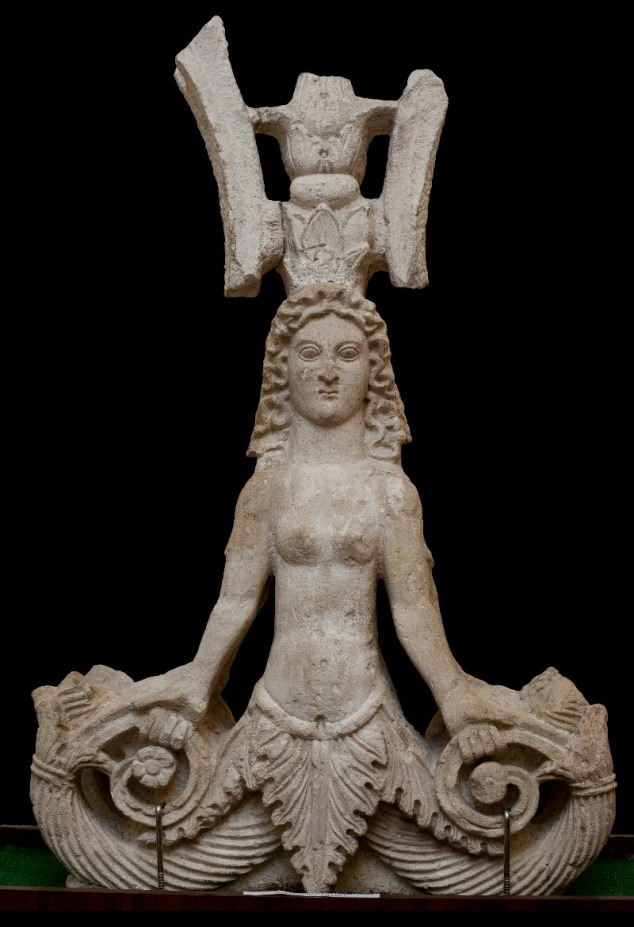
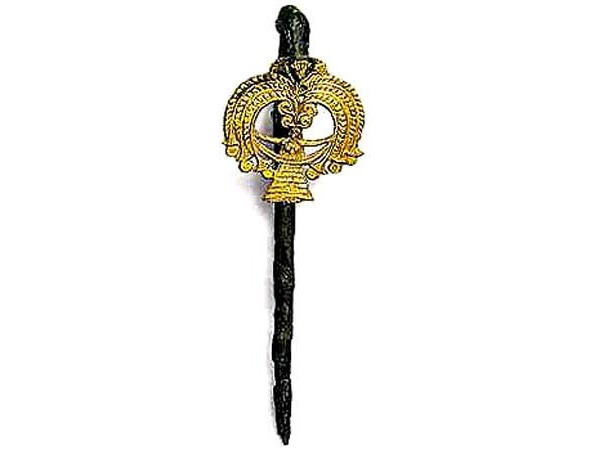
Many of the capitals of the Greek columns in the temples depict the symbol of the goddess Ella-Helena, a blossoming flower, Acanthus or palmetta, as a symbol of the rebirth from death. The custom of giving flowers, bouquets, is obviously connected with this cult. And here, one of the hints of the ancient philosophers becomes clear: «Everything in the world is a product of love.» And it turns out that the Christian priests were right, identifying Hellenism and paganism. Ellinism is not a nationality, but a system of very stable religious and cultural ideas, the most important of which is the belief in the Mother Goddess, and the hope of resurrection after death.
Dating of Schliemann’s Treasure
A number of Schliemann’s finds, called the «Priam’s Treasure», were found on the site of the site of the site, recognized as the ruins of Troy. Artifacts were found on the foundations of the main building of the Troy Acropolis from 1873. to 1882. with interruptions. These are treasures with ordinal numbers A to R. As it is already believed, the treasure has nothing to do with the king of Troy Priam. It dates from 2400—2300 years. BC., that is, existed a thousand years before Priam. Let’s try to clarify this date. William Taylor, in his book The Mycenaean and Mycenaeans, writes about the origin of the Hellenes (or rather the Achaeans), that materials and a large archaeological work inspired researchers to answer the question of the origin and differences of those people who created Mycenaean monuments and culture.
Is it correct to say that the Mycenaean century marked the beginning of Hellenic culture? In Greece, not once and not two fell different peoples, including in historical time. Finds of archaeologists show that up to the classical period the continuous development of civilization continued. In the period from 1900—1800 BC. across the whole of Greece began to spread new ceramics with characteristic features, known as gray «minyan» products. The name was offered by Schliemann, who first came across it during excavations in Orchomen. He named it in honor of the Mynyan tribe, which, according to legend, is associated with this city. The name was unsuccessful, because in fact this tribe is not associated with the origin of ceramics. Minyan ceramics are easy to distinguish from all other gray products due to their excellent quality and very specific finishing technique. Most likely, according to Taylor, she was brought to Greece by representatives of one of the nomadic tribes. In the form of vases, a resemblance to metal products is seen in Taylor’s opinion. The ceramic products, similar to the gray minyan ceramics, were found by archaeologists throughout North-West Turkey, they have distinctly expressed signs of TroyVI ceramics, which indicates a homogeneous population of this region of Asia Minor at the beginning of the second millennium BC and the base the sixth settlement around the XIX century. BC. Practically simultaneous appearance of similar ceramics in two separate but not very distant territories suggests that both Troy and Greece were invaded by the same invaders. It is commonly believed that they brought to Greece and one of the forms of the Greek language. The bearers of this culture came from the east, passing through the northern Anatolian plateau in Troy. Indeed, the Mycenaean ceramics are in some ways similar to gray products from the northeast of Iran. The invaders brought with them new types of weapons, primarily cavalry and chariots, which played a decisive role in keeping the occupied territories. For the first time, the horses’ bones were found in the TroyVI along with minyan products, possibly a wave of invaders penetrating Greece, brought with them horses. This theory contradicts the fact that in later times the transportation of horses by sea through the straits that separate Europe and Asia was a dangerous, if not a lethal, operation. For about two centuries, the invaders strengthened their positions, absorbed and integrated the existing culture, increasing their own well-being and strengthening their power, facilitated by coastal trade and piracy. At the beginning of the XVI century. There is an increasing influence of Crete on their culture and, it can be said, the phenomenon known as the Age of Mycenae begins. States of the Mycenaean type, similar to those described in the Iliad, began to form in Athens (although not very significant), and also in Attica. The strongest power Miken showed up in the Peloponnese, where Pylos ruled Messenia, as well as in a group of fortresses in Argolid, dependent on Mycenae. Lakonia lying between these two territories has not been explored, and its Mykene capital has not yet been discovered. So, Taylor relies on the specific Mingyang ceramics in the dating, and speaks of the proximity of the Trojan culture and the Greek (Achaean). Some, the most important elements of jewelry, namely the lobed temporal rings of women’s rings, allow us to put forward a hypothesis about migration of nomadic tribes from the Ural steppes to Asia Minor, Iran and Greece. Now we turn to the dating of the Treasure of Schliemann, and what the researchers base on dating. The treasure itself was in a silver two-handed vessel. It consisted of more than 10,000 items. Most of all there were gold beads — about 1000. And the beads were very diverse in form — and a small beads, and thin tubes, and beads with flattened blades. When was done the reconstruction of the breast pectoral, consisting of these beads, turned out twenty luxurious threads of a necklace, to the bottom of which 47 gold rods were suspended, and in
center was located one very special — with thin slicing. Also unique are the rings, called the temporal lobular rings-the number of parts from two to six. The top rings were made from the materials of the finds, from gold and silver. It is interesting to show the bipartite ring from the Treasure of the Climber of Schliemann Catalog inventory number Аар132, Бз50, П92 F6014 and Аар 133 Бз49, P91 A 6015..
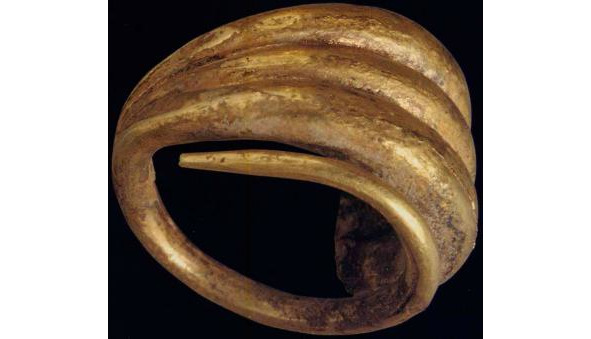
A bipartite gold ring from the Collection of the GIM (Historical Museum). Photo dsc00946. These findings only confirm Taylor’s theory of the advancement of pastoral tribes to Asia Minor and Greece. The find is dated to the beginning of the second millennium BC. Now let’s turn to the finds of Abashevskaya and Andronovskaya kultury. Oni developed in the forest-steppe zone of Eastern Europe, whose monuments are found from the left bank of the Dnieper in the west to the Tobol River. It dates from the beginning of the middle of 2tys. BC The same distinctive feature can be seen in the decoration of the vessels of the pattern «meander», as well as dicotyledonous golden rings. In the Urals, in the peat bogs, wooden scoops with a figure of a swan are found. similar to the crystal cup from Mycenae of the same time (photo below). On materials of archaeological excavations, as well as on the images of chariots on vessels, it is evident that people of this culture bred horses and used chariots.
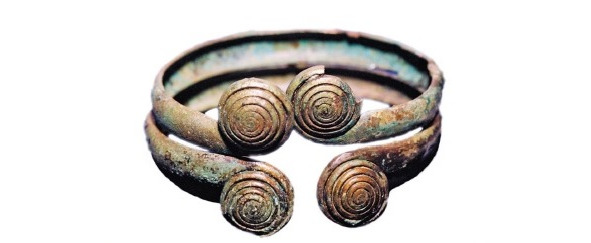
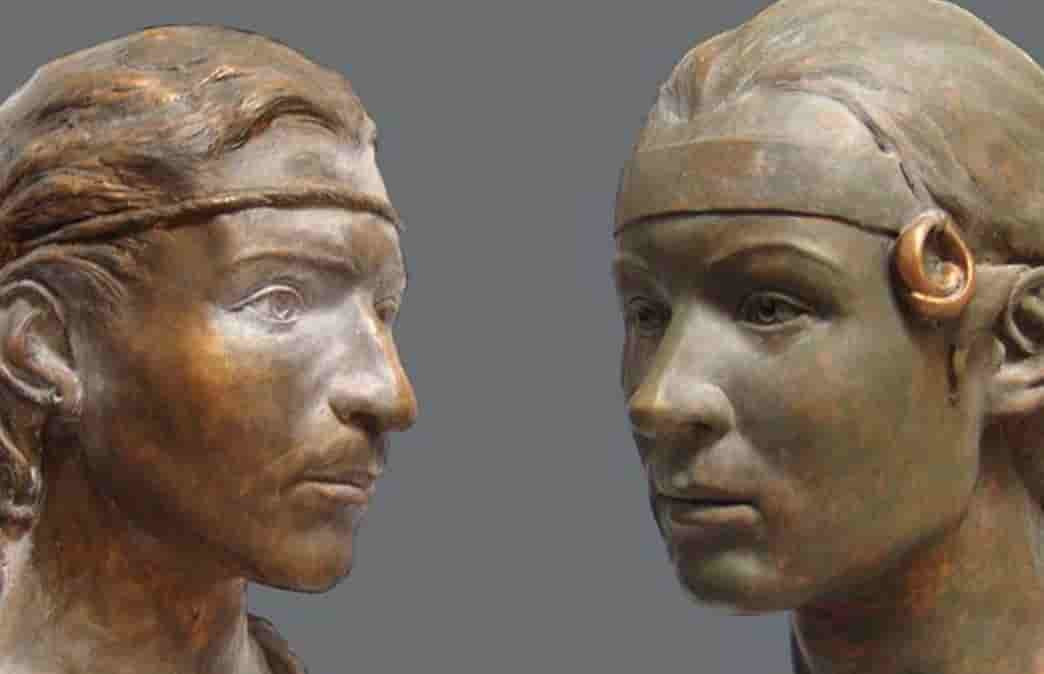
The finds in Arkaim also of bipartite temporal rings of gold indicate that this culture was quite highly developed, people were working on bronze, gold, and wood. It was quite a cultural and technological society for that time. And at least they built fortified points.
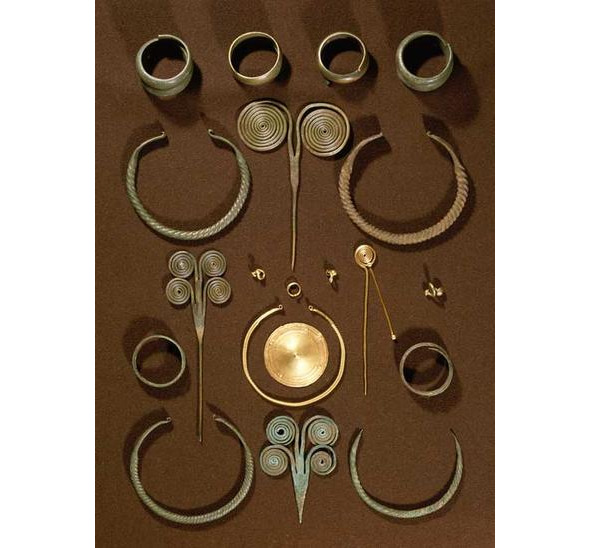
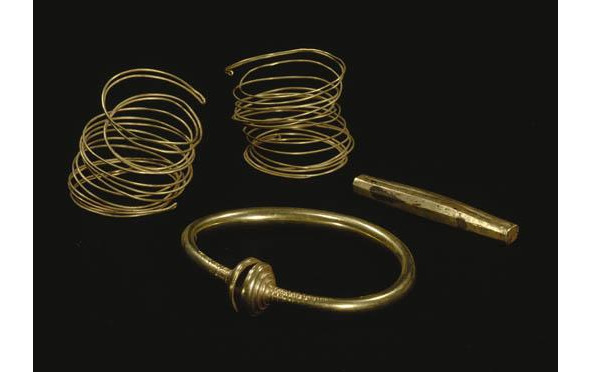
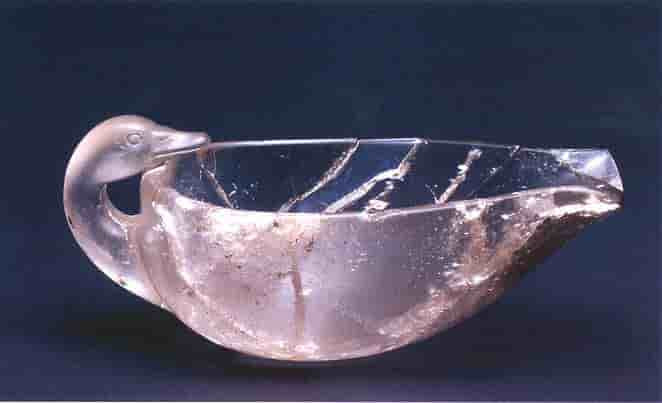
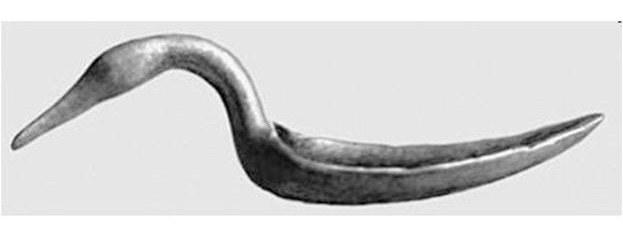
The quality of the processing of products is simply amazing.. A similar lobed ring was found in Denmark in the Borgbjerg Bank in West Zealand. is dated to the lobate ring of the 11th century BC., the same lobed rings are found in Vejle, and date back to the 11th century BC. Similar lobed triple rings were in the cloak of Priam, although rings from Asia Minor are incomparably more rough work. The ring is decorated with beautiful ornaments, and according to the processing technique without any praise, it’s just a magnificent work. Also with the lobed ring in Denmark were found beautiful golden bowls with handles in the form of horses and bowls resemble a bucket of wood found in the Urals. Now you can go to the dating questions. The temporal lobular ring from Russia dates back to the middle of 2 thousand В.С. (Orenburg Region, Abashevskaya Culture) Treasure’s Schliemann Treasure dates back to 2200—2400.В. С. Based on the materials of the cross finds in Troy and Russian Orenburzhye, the date shifts to the end-middle of 2000 BC, (also Abashevskaya Culture) consequently to the epoch of Troy 6, and not to Troy 2. Why did this happen? Because of the confusion in the dating in the foundations of houses. The example of Rome can confuse any archaeologist-many houses of the 18th and 19th century are built on the foundations of houses 2—4 AD.
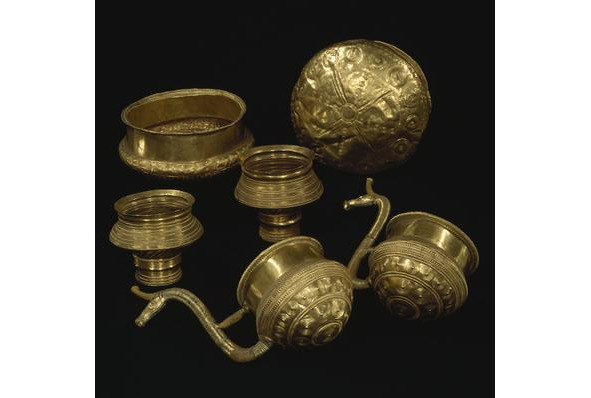
So, the similarity of the cultures of the pastoral tribes of the forest-steppe zone of Eurasia and Troy is traced not only in ceramics, but also in ornaments (temple rings made of gold, gold necklaces, and similarity of buckets with headband in the form of a swan), which again confirms the conclusions Taylor on migration from the Eurasian steppes to Asia Minor, Northern Iran and Greece.
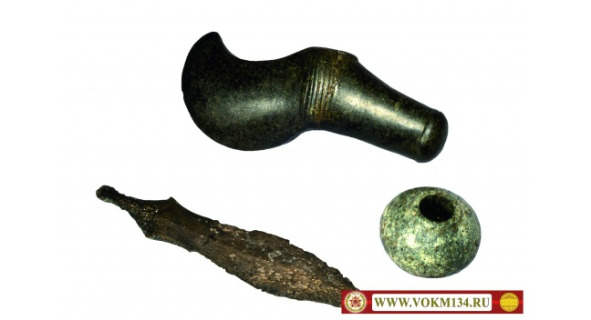
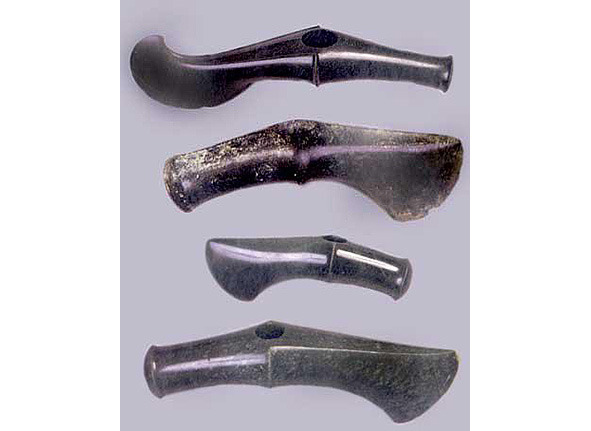
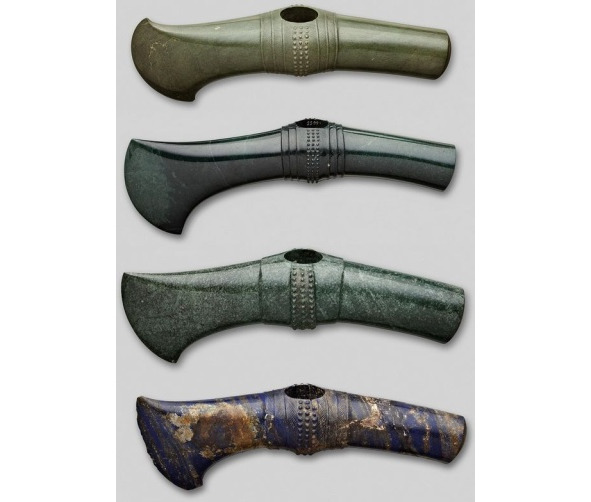
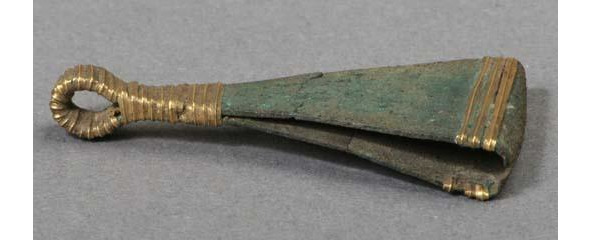
Nikulina N.M. in his work «Ritual axes-hammers of the Trojan treasure»: «Trojan hammers-axes are, in their image and content, especially close to the circle of Aegean ritual objects, although they also have the Asiatic parallels (they will be discussed below) Cretan and Mycenaean Labrysides of the 16th-15th centuries BC and stone ritual hammers-axes from the treasure of L, made of nephrite, jade and rock, close to lapis lazuli, made in a very complex technique that imitates metal products (bronze, gilded bronze or gold), in our opinion, are quite comparable with each other.They create a very convincing visual series that makes you think about a real chronological definition of the famous Trojan monuments.The presence next to the stone hammers-axes in the same treasure L several pommels of rock crystal, completely similar to the crystal tops of daggers from Mycenaean royal tombs of circle A, only increases doubts about the dating of the archaeological complex under consideration, revealing one more binding with the circle of monuments of the Aegean artistic culture. «The presence in the complex of the treasure L of the caked metal and the very forms of small objects that have appeared in this conglomerate, in our view, do not in the least contradict the later dating of the entire L treasure as a whole. Carnations and other objects of a similar shape exist also in the 2nd millennium BC) Half of the iron top (iron slag) found in the same complex of the treasure of L is, apparently, only an additional confirmation of the correctness of our definition. Reference to A. Getz, who believed that beads, sintered metal and iron slag could not be associated with this treasure, is not too convincing, especially since even with regard to the ritual hammer axes, Goetze spoke rather vaguely. In our opinion, all these items still treated this treasure, and there are no contradictions here. As a result, proceeding from the technological analysis of the Trojan monuments examined, the late dating of the treasure L, — II millennium BC, with even greater distinctiveness, looms. (1700—1500 BC). «Karl Blegen, in his book» Troy and the Trojans», speaks of the ritual stone axes from Troy: «Most of all it looks like a weapon that was in use in Bessarabia» (meaning the famous Borodino treasure). The Borodino Treasure is found approximately in the middle of the 2nd millennium BC That roughly coincides with the monuments of the Abashev culture as well, that is, Nikulina NM also relates the time, at least, of making the treasure to the time of Troy 6. And then, as it is not sad for the skeptics, Schliemann still found the Treasure of King Priam. (At least, it can be relied to the era of the Trojan War).
The tactics of the Achaean chariots in battle
One of the keys to understanding the process of the genesis of the chariot today is the radiocarbon date for the construction of 32 burials of the Great Ipatovsky Barrow — the XXIII century BC. as the most probable. This fact allows us to speak about the inclusion of a circle of Manych catacomb monuments in the area of chariot formation. The Sintashta interval of dating dates back to 1970—1770 (2030—1750). BC. To the same period belongs a vessel from the State Historical Museum (hereinafter — GIM) pic.24. The vessel shows a schematic image of the chariot. In the same way, these tribes used the meander in the cult objects, and there are numerous finds of lobular temporal rings of gold attributed to the same period, as well as boat-shaped wooden cups found in swamps, with a head in the form of a duck swan. Such a find, only a cup of crystal, found in Mycenae, dates back to the 16th century. BC. Lobular temporal rings are found in Troy, and, therefore, can be dated from the same 17th-18th century BC. or earlier. The lobed temporal rings in pic.17 from the collection of the GIM belong to the beginning of the 2nd millennium BC. But cultural unity is obvious.
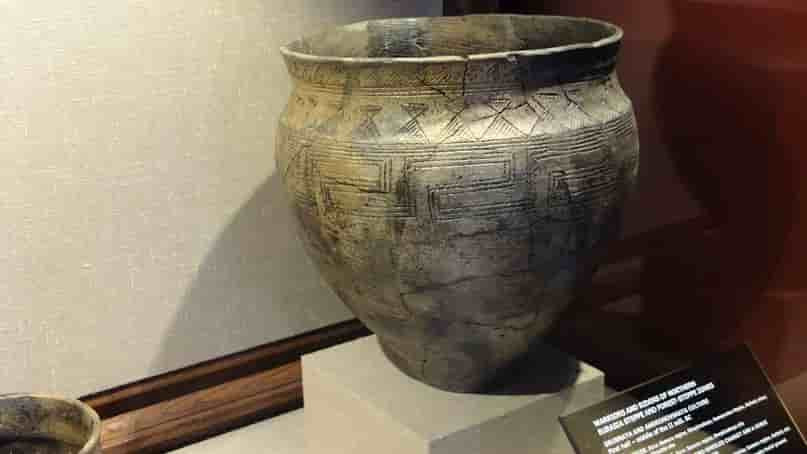
Most likely, according to Taylor, this culture was brought to Greece by representatives of one of the nomadic tribes from the steppes of Eurasia. According to Taylor in the form of vases, a resemblance to metal products can be seen. Ceramic products, similar to the gray minyan pottery, were found by archaeologists throughout North-West Turkey, they have distinct signs of Troy VI ceramics, which indicates a homogeneous population of this region of Asia Minor in the early 2nd millennium BC. and the founding of the sixth settlement around the 19th century. BC. It can be argued that representatives of this culture brought to Greece, Egypt, and the Far East the art of making and using chariots. Practically simultaneous appearance of similar ceramics in two separate but not very distant territories suggests that both Troy and Greece were invaded by the same invaders. It is commonly believed that they brought to Greece and one of the forms of the Greek language. The bearers of this culture came from the east, passing through the northern Anatolian plateau in Troy. Indeed, the Mycenaean ceramics are in some ways similar to gray products from the northeast of Iran. The invaders brought with them new types of weapons, primarily cavalry and chariots, which played a decisive role in keeping the occupied territories. For the first time, the horses’ bones were found in the TroyVI along with minyan products, possibly a wave of invaders penetrating Greece, brought with them horses. Most likely, according to Taylor, this culture was brought to Greece by representatives of one of the nomadic tribes from the steppes of Eurasia. According to Taylor in the form of vases, a resemblance to metal products can be seen. Ceramic products, similar to the gray minyan pottery, were found by archaeologists throughout North-West Turkey, they have distinct signs of Troy VI ceramics, which indicates a homogeneous population of this region of Asia Minor in the early 2nd millennium BC. and the founding of the sixth settlement around the 19th century. BC. It can be argued that representatives of this culture brought to Greece, Egypt, and the Far East the art of making and using chariots. Practically simultaneous appearance of similar ceramics in two separate but not very distant territories suggests that both Troy and Greece were invaded by the same invaders. It is commonly believed that they brought to Greece and one of the forms of the Greek language. The bearers of this culture came from the east, passing through the northern Anatolian plateau in Troy. Indeed, the Mycenaean ceramics are in some ways similar to gray products from the northeast of Iran. The invaders brought with them new types of weapons, primarily cavalry and chariots, which played a decisive role in keeping the occupied territories. For the first time, the horses’ bones were found in the Troy VI along with minyan products, possibly a wave of invaders penetrating Greece, brought with them horses. The first evidence in the Near East of the use of wheels with spokes belong to the XIX — XVII centuries. BC., These are images on Syrian seals. Most brightly and fully in the Middle East, the chariot complex manifested itself only in the XVIII — XVI centuries. BC. — during the period of the Egyptian conquest of Egypt. Note that the Egyptian and Syrian-Palestinian battle chariots, horse harnesses are represented in the form of an already established set of objects and technologies. In Greece, the chariot complex appears relatively late, not earlier than the 16th century. BC. The main evidence of origin is associated with the IV Shaft tomb in Mycenae and not very numerous iconographic sources of this time from Tiryns. The invention of chariots caused a revolution in military affairs. Outcome of Whole battles and the fate of states depended on their swift attack on the battlefield. It is difficult to say when exactly the first chariots appeared, but it is reliably known that they existed since the beginning of the III millennium BC in Mesopotamia. Ritual and battle chariots archeologists found on the territory of the ancient city of Kish, the ancient city-state of Ur and in Transcaucasia. In many museums of the world there are objects with the image of chariots, their clay and bronze models. Recently found in the South Urals burials with chariots allowed to clearly link the Middle Eastern and Far Eastern harnesses of the beginning of the 2nd millennium BC. As you know, the Aryan tribes buried their warriors with horses in chariots. The oldest chariot known to scientists of the classical type, not from the Mesopotamia, was discovered near the Krivoye Ozero (Chelyabinsk region), on the archaeological site of the Sintashta culture, and dates back to 2000 BC. The chariot came to the southern part of the Balkan peninsula along with horses in the first half of the 16th century. and this fully agrees with the mythological tradition (the myth of Danae and Egypt, about how the Danes were driven out of Egypt). The chariot, already in a rather perfect form, we meet for the first time on three stelae V of the mine grave of circle A in Mycenae. Obviously, the chariot could not appear among the Achaeans on its own, in the process of centuries-old evolution from a simple wagon — it was borrowed by them. In regard to the place where the Greeks borrowed the chariot, there are two main versions, which can be called eastern and northern. So, often the area of borrowing is the Levant. Indeed, the Mycenaean relations with the Syro-Phoenician region can not be denied, but the similarities in the construction of the Mycenaean and Levantine teams are not yet proof of such borrowing. Under the Hyksos pharaohs, and after the overthrow of this dynasty, the main force of the Egyptian army was the two-wheeled chariots, were also the core of the Mesopotamian armies, re-armed to the «Aryan» mode. Initially, the most prominent representatives of the emerging Mycenaean states had the team in Greece. It was they who fought with chariots, both with a bow and with the help of a spear, which required direct contact with the enemy and possible dismounting. The bulk of the troops consisted of infantrymen. The battle in this period was of a «heroic» individual character, since the society itself was at the stage of «military democracy». After the constitution of statehood, the Achaean kingdoms became bureaucratic monarchies of the eastern type, where the palace was the center of production and distribution. But rather, the Achaean states formed as an apparatus of violence in the conquest, because in later time free citizens did not pay taxes, and in the Pylonsk plaques there is evidence of taxation. Such a state mechanism could contain an army, giving it weapons, food, providing land and all this keeping the troops under constant control. In this period (XV — XIII centuries.) Charioteers, as in the East, were a privileged social stratum. Chariots received from the imperial arsenals the most expensive elements of their weapons — armor, they were given out of stables by horses, and from storage — by chariots. Personal weapons chariot fighters probably had their own. May 15, 1468 BC. held the first documented battle in history — Megiddo, where the Egyptian pharaoh Thutmose III fought against the Canaanite kings. A brilliant military commander, Thutmose III, personally leading the war chariots placed in the center, defeated scattered Syrian-Palestinian troops. The most important chariot battle in ancient history is the Battle of Kadesh (1299 BC), in which up to seven thousand chariots participated from the Egyptians, the Hittites and the Syrians. How did the famous ancient Greek heroes from the «Iliad» of Homer fight?
«No, so that no one, on the art of riding and on the strength of a reliable,
Before others did not blaze ahead with matches to fight or back to address: you weaken yourself.
Who else in his chariot will come the chariot, set the peak forward: the best way for the cavalry.
So doing, and the ancient walls, and hailstones were smashed, the mind and spirit of this kind kept in valiant body».
«Homer, «Iliad»
Homer believed that they dismounted before the battle or fought a throwing dart weapon and fired arrows from bows. It is clear that no one saw the true picture of the battle, or, rather, did not believe in ancient stories. «Quickly the hero with a chariot with weapons spun on the ground; Sharp spears hesitating, circling around the militia, Spilling the fire into battle; and he raised a terrible scourge, the Trojans turned to battle and stood in the face of the Argives. «Homer, The Iliad. But all the same fight was conducted by chariot fighters with shock long spears, in the manner of medieval knights. The structure of the chariots was comparatively free, linear, for possible maneuver. The goal was to knock down the enemy’s chariot from the chariot, and the spear had to break, otherwise the impulse would throw the warrior out of the chariot. In the event of an attack by the chariot fighters of enemy infantry, the maneuver was even more complicated. The chariot was to attack the infantry not in the forehead, in the front, but at an acute angle — that is, the driver of the rules along the enemy’s system, and the soldier pierced the infantry with a heavy spear. If the chariot fighter used the ramming blow, the spear broke, and the warrior used a spare. Horses, unlike fighting elephants, can not push the infantry. Therefore, the chariots can not and could not break through the infantry system, they only inflicted huge damage on the infantry, remaining invulnerable. Also, later, the klibanarii acted against the infantry at a later time — they drove up to the ranks, inflicted a terrible blow with a spear, and drove away, remaining invulnerable. And the rider’s spear must have broken, otherwise he could fly out of the saddle. And that’s where the message about the sickles on the wheels of the Persian war chariots — they would be effective when attacking at an acute angle to the formation, and not in the frontal attack. During the attack of the infantry, therefore, the chariots on the battlefield made a maneuver in the form of a figure eight, repeatedly calling in an attack on the infantry and making a maneuver of evasion. The infantry were rescued from destruction by their own chariots, attacking the enemy and not allowing them to deal with defenseless infantry. The function of the infantry basically consisted in supporting battle chariots, saving heroes, pulling out the wounded, and filing new copies. Later, in the Macedonian era, such a function was with the hypospists, they supported the Eters in battle. And so it was at the Battle of Heronie that the Macedonian Eaters destroyed the holy Theban detachment — approaching the Thebans with an expanded formation and hitting them with spears from a safe distance, returning alternately for a new blow with a spear. But not allowing to form a dump, that is, the attack of the Macedonians is similar to the work of a sewing machine — they destroyed the Thebans little by little. Also the Parthians destroyed the legions of Crassus. But an important secret was in the training of charioteers. All Achaean heroes, and Hercules, and Achilles, and Ajax, were chariot fighters. The process of preparation began from childhood, about this there were stories about the childhood of Achilles and Hercules. Achilles was given up in training to Chiron. He was even taught medicine. But the main thing was not in this. By behavioral reflexes and it is obvious that they received stimulants, for all the symptoms, obviously on the basis of ephedrine or methamphetamine. Ephedra aphylla — ephedra leafless (Ephedra aphylla Forssk). Epineph distachya is found in the south of the European part of Russia and in the steppes of Western Siberia. Ephedra major Host (Ephedra procera Fisch) is marked in intermountain hollows and longitudinal valleys in the North Caucasus and Dagestan. Ephedrine is a poisonous alkaloid, a plant-based psychostimulant. The substance is contained along with pseudoephedrine in various kinds of ephedra that grows in mountains of Central Asia and Western Siberia.The mechanism of action. Ephedrine activates α- and β-adrenoreceptors.As to the effect on the peripheral part of the sympathetic nervous system, the substance is similar to adrenaline, but its action is more mild and prolonged. ephedrine stimulates the central nervous system in a specific way, in the sympathetic system, the nerve nodes are outside the organs, and in the stressful situation, their activation becomes active, as a result, a person can run very quickly to escape persecution, or stand barefoot in the snow without feeling frostbite and The mobilization of all the body’s defenses takes place, which is sometimes accompanied by the release of adrenaline, and all domestic energy reserves are channeled into the fight against the danger. It is difficult to drive an organism into this state in a natural way, but it becomes possible, considering the effect of ephedrine on the body. It activates receptors, as a result of which processes are started that require significant energy inputs: pressure increases; heart rate increases; increased blood glucose; the tone of the muscles of the skeleton increases. The use of ephedrine leads to the fact that the intellectual and physical abilities of a person increase sharply, he feels vivacity, clarity of mind, is in high spirits. In fact, the substance «spurs» the body, acting as a whip. By pharmacological action — sympathomimetic, stimulates α- and β-adrenergic receptors, acting on varicose thickenings of efferent adrenergic fibers, promotes the release of norepinephrine into the synaptic cleft. In addition, it has a weak stimulating effect directly on adrenoreceptors. It causes vasoconstrictive, bronchodilating and psychostimulating action. Increases the overall peripheral vascular resistance and systemic arterial pressure, increases the minute volume of blood circulation, heart rate and heart rate, improves atrioventricular conductivity; increases the tone of skeletal muscles, the concentration of glucose in the blood. It inhibits intestinal peristalsis, dilates the pupil (without affecting accommodation and intraocular pressure). By psycho-stimulating action is close to amphetamine. It inhibits the activity of monoamine oxidase and catechol-O-methyltransferase. Has a stimulating effect on α-adrenergic receptors of blood vessels in the skin, causing narrowing of dilated vessels, thereby reducing their increased permeability, leading to a reduction in swelling in hives. Chronic use. The most common consequence is thrombophlebitis, vein thrombosis. Also, chronic use develops mental disorders associated with depletion of the nervous system (asthenia, neurosis, etc.), depression, psychosis (with delusional and / or hallucinatory symptoms). Now I will try to say so, to tell about the obvious, according to indirect data, constant use of amphetamines by Achaean heroes. 1. Incredible power; 2. Absolutely unpredictable character, unprovoked aggression; 3. Mood swings, including an absolutely incredible nature, close to pathological. During such attacks, Hercules killed his children and burned them, taking them for demons. During the darkening of consciousness, he killed his brother Iphicles, nearly killed the hero of Telamon. Perhaps part of the news of his exploits is due to his appalling visions. Incidentally, it was precisely after this murder that he was forced to commit 12 of his exploits. Ajax, having accepted the herd of sheep for Trojans, interrupted them, then from shame rushed to the sword. So here it is not accidental, but regularity.
«The double takes me to the grave limit:
If I stay here, before the hail of the Trojans fight,
— No return to me, but my glory will not perish.
If I return to the house, my dear native land,
My glory will perish, but my age will be long,
And it’s not premature for me to die a fateful death.»
Homer, «Iliad»
This choice was in the childhood of Achilles. That is, the choice to become a chariot fighter, to be doomed to a short life, but full of fame and exploits, the Achaeans did voluntarily and consciously. But there was no chance to live long. Obviously, as in the case of Ajax and Hercules, alcohol played the role of trigger reaction. But the advantages, obviously, outweighed the cons. In the midst of a frenzied racing chariot, the fighter had to be able to make very fast decisions and have the rare power to fight under the weight of heavy armor. After the Greeks abandoned the battle chariots for combat, the need for stimulants disappeared.
The chariot fighters of Ancient Greece from the bronze age. The caste system in the ancient Indo-Europeans. Pyrroses and the myrmidons — the chariot warriors who chose a short life for immortal glory
Described by Homer in the immortal «Iliad» exploits of ancient Greek heroes, were exploits of soldiers fighting in chariots. As considered by different scientists, the war took place between 1280 and 1180. BC (Eratosthenes-1180 BC, Michael Wood 1280 BC, Carl Blegan-middle of the 13th century BC). Combat chariots, and the ability to fight them, were brought by the Indo-Europeans to Greece in the early 16th century. BC. According to William Taylor, Indo-European tribes came to Greece from the Eurasian steppes through Iran and Asia Minor, and not through the Danube. What cultures can be associated with Mycenaean culture and the culture of Troy Priam? This is a culture that has been called the Abashev culture, which passed to Sintashtskaya and gave birth to Pozdnyakovskaya and
Coban Cultures. This can be seen with all the evidence and from the materials of many sign findings, which determine cultural, and obviously, religious affinity.
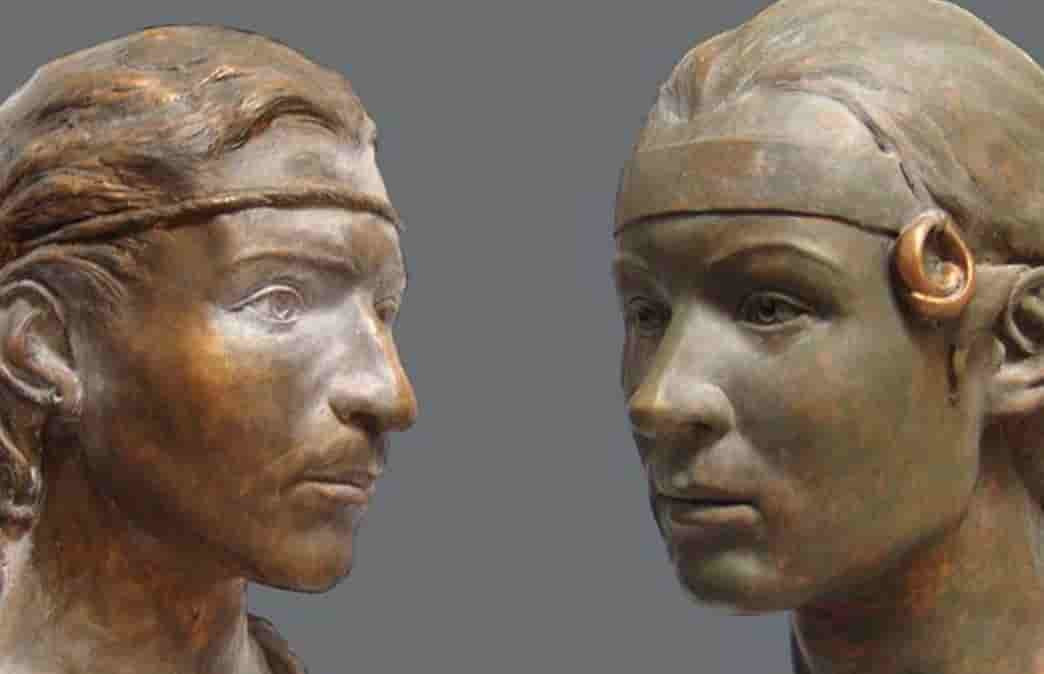
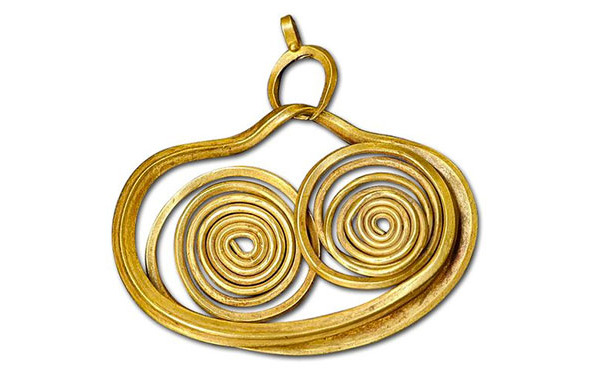

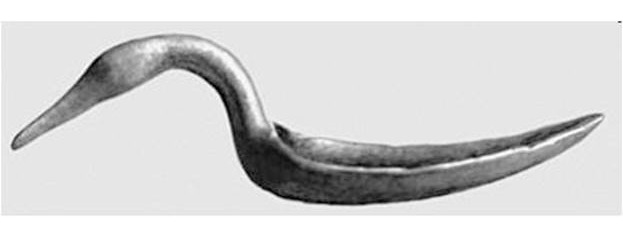
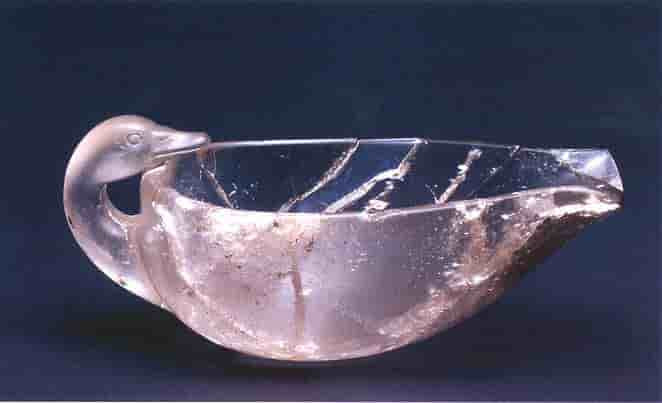
These are pendants with a double spiral, lobed temporal rings, vessels with a meander, vessels in the form of a goose-swan. And, most importantly, the similarity of the device of the steppe Eurasian sintashta-type chariot and Achaean, known from the images. In the same way, a similar burial rite is related to these cultures, especially the discovery of the underground tolos, roughly dated 2200 BC. About 2200, Indo-Europeans from the area of the Abashevskaya and Poltavkino cultures begin to move to the southern Urals and build settlements there
with fortifications, which can already be called cities. In total, the researchers found more than 20 fortresses built in the steppe part of Eurasia between the rivers Ural in the west and Tobol in the east. This culture was called Sintashtinskaya by the name of the first of the fortresses investigated by archaeologists. Sintashta, discovered and excavated in 1972—1987, was built as a round fortress with a circumference of 140 m, behind a fortified wall in which there were more than 50 houses, and in all managed to find traces of metal processing. It turns out that Sintashta was built as a fortified settlement erected for the safe processing of metal. Five funerary complexes were found behind the outline of the settlement, which were accompanied by sacrifices of entire horses (up to eight in one grave), axes and daggers of copper and bronze and stone maces. An exceptional case of finding on the necropolis of Sintashty burial without a grave pit, i.e. on the surface of the Earth and with the construction above the dead clay dome-tolos. There were burials of three types-cremation (rare), inhumation, and burial in tolons (so far one has been found). It can be argued that the Indo-Europeans at that time already had a caste system in their embryonic form, with a division of duties and honors within the people. This is obvious, chariot fighters, who have continuously fought, priests and ordinary members of the community. The leader, usually was also a priest. (An analogue in ancient Greece was-in Athens archon-basileus performed priestly functions). Tholos, apparently, was the burial place of the king-priest.
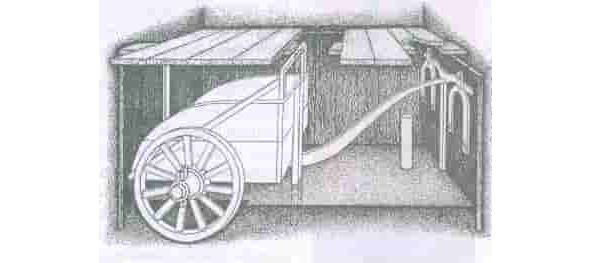
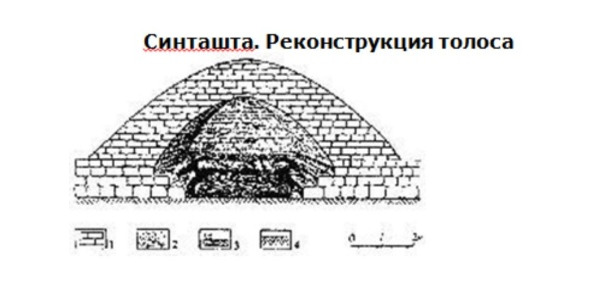
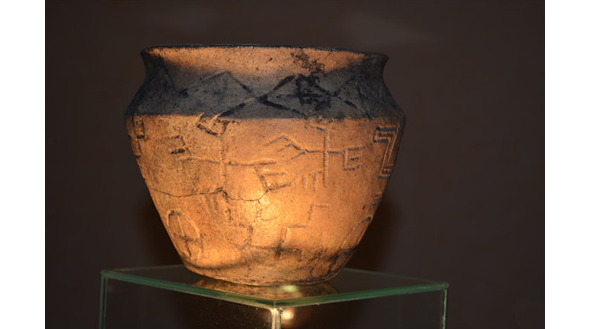
From their Urals-Tobolsk ancestral home, the chariots spread not only to the south, but also to the west and east. In the 16th century BC. the pragrean tribes (Achaeans) come to Greece. The importance of the importance of chariots for the Mycenaean state is evidenced by the stelae that were erected over the graves of soldiers, apparently charioteers. Although many researchers insist that the catacomb burials in Mycenae circles A and B are royal graves, this can be disagreed, at least not completely. The presence in Sintashta of Tolos speaks about the tradition of their erection, relating the date of construction to 2200 years. BC, and it turns out that the Mycenaean tolos can be much older. The later Greek tradition of burial in tolos speaks of the royal prerogative for this type of grave (Panticapaeum, an underground tolos in Macedonia). Of the six steles, burials of the 16th century BC. on which it is possible to disassemble and explore the depicted, five reliefs with the participation of chariot fighters. And if we extrapolate the social structure of Sintashta to the Achaean society, then the graves of the grave circles A and B in Mycenae do not belong to the kings, namely the chosen soldiers, and this explains the group nature of the graves in one grave, which apparently died simultaneously. And kings, or rather, kings priests were buried in the tolos, or in mountain tombs, as in Crete.
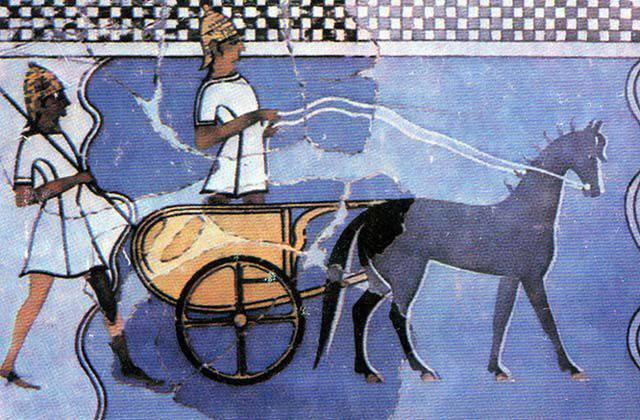
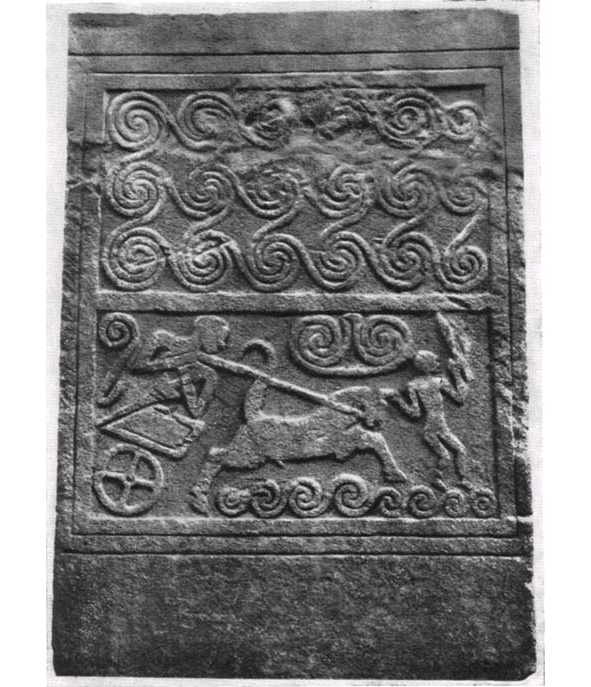
Chariots are repeatedly represented in other works of Mycenaean art (frescoes, portraits on rings) The most charitable representatives, caste of chariot fighters, possessed the war chariot in Greece. They fought with chariots both with a bow, and with the help of a spear, which required direct contact with the enemy. The main mass of troops consisted of infantry, supporting and helping in battle charioteer. The battle in this period was of an individual character, and resembled the later battles of knights in the Middle Ages. The Achaian kingdoms were formed by the conquest and conquest of the local population, and this undoubtedly left a mark on the social structure of these systems. And in Mycenaean Greece, like India, caste-warriors, priests, and commoners were formed. It also happened in Sparta, much later, where the Spartans were a caste of warriors. After all, at a later time in Hellas, free citizens did not pay taxes, and in the pylon tablets there is evidence of taxation of the population. Such a state mechanism could contain an army, giving it weapons, food, providing land and all this keeping the troops under constant control, and the conquered people-in submission n this period (XV — XIII centuries.) Charioteers, as in the East, were a privileged social stratum. Chariots received from the imperial arsenals the most expensive elements of their weapons — armor, they were given out of stables by horses, and from storage — by chariots. Personal weapons chariot fighters probably had their own. How did the famous Greek heroes from the «Iliad» of Homer fight?
«No, so that no one, on the art of riding and on the strength of a reliable,
Before others did not flare ahead with the matches to fight or turn back:
you yourself will weaken yourself.
Who else in his chariot will come to the chariot, save the peak ahead: the best way for the horsemen
Thus, both the ancient walls and hailstones were smashed, the mind and spirit retained this in valorous bodies.»
Homer himself believed that they dismounted before the battle, or fought with a throwing dart weapon and fired arrows from bows. It is clear that no one saw the true picture of the battle, or, rather, did not believe in ancient stories. «Quickly the heroes of the chariot with weapons spun on the ground, sharp spears hesitating, circled around the militia, the Spirit whipping into battle, and he rebelled a terrible scourge.» The Trojans turned to the battle and faced the Argives. «Still, the fight was conducted by chariot fighters with shock long spears, in the manner of medieval knights.The chariot structure was at great intervals, linear, deep in one wagon for possible maneuver.The purpose of the attack was to shoot down the enemy chariot of the fighter, with the spear must break, otherwise the impulse would throw the attacker out of the chariot. fighters attack a cart of enemy infantry, the maneuver becomes more difficult. The chariot was to attack the infantry not in the forehead, in front, and at an acute angle, that is, the driver of the rules along the enemy building, and the soldier with a heavy spear smashed the infantrymen. If the chariot fighter used the ramming blow, the spear broke, and the warrior used a spare.
Horses, unlike fighting elephants, can not push the infantry. Therefore, the chariots can not and could not break through the infantry system, they only inflicted huge damage on the infantry, remaining invulnerable. Also later, the klibanarii acted against the infantry at a later time, drove up to the ranks, inflicted a terrible blow with a spear, and drove away, remaining invulnerable. And the rider’s spear must have broken, otherwise he could fly out of the saddle. Attacking the infantry of the chariot during the battle made a maneuver in the form of eight-time after time calling in an attack on the infantry and making a maneuver of evasion. Sold the infantry from the death of their own chariots, calling the enemy on the flank, and not letting them maneuver. The duty of the infantry was to support the battle chariots, covering the heavily armed, saving the wounded, to provide the chariots with weapons. About the true name of Achilles-Pierre (and Neoptolemus too, and the whole dynasty of the kings of Epirus). Translation literal — fire. Here is the logical series-the Pyrr-chariot fighter, the Taurin-Persian heavy cavalry warrior (supposedly from the word furnace, but the more preferable concept in the sense of how hot and hot), the Klibanarii-also translate as what is happening from the iron stove, and again in meaning ardent, hot. Not the object itself is important, but the property of the object. The name of the warrior stove would be strange… Later, the word Varyag — from the word «var», cook, create, again meaning meaning ardent, hot. This is a completely clear, understandable and logical property of the warrior, to be passionate and energetic. Perhaps hypothetically, in ancient times the chariot fighters in Greece were called the Pyrrhus (like klibanarii, Varangians, taurins). Rather, it was one of the names. Another is the well-known Mirmidonians. And this conflict between Achilles and Agamemnon in the Iliad was a kind of rebellion of the chosen warriors-Agamemnon broke promises, took away the booty, the Pyrrhus (chariot fighters) refused to fight. Pirrih-military Greek dance, as a system of training warriors known before the 7th century AD… But the warriors in Greece were called hoplites (from the shield), stratiotes. But-never-feast. That is, the category of these fighters is a thing of the past long ago. And the Pyrrhus were not just fighters, but super-armed, like the klibanarii and Persian taurins, live tanks. And just as interesting is this one, which seems to be a strange conflict, with a whole army in the person of Agamemnon. Usually, such a conflict ends not in favor of a single person. Another thing, a large, very representative group, all the chariot fighters, the Pyrrhus. Just an interesting reference to the «Little Iliad» -with the passionate desire of the Achaeans awaiting the arrival of the son of Achilles (whose name was also Perr). What is strange, nowhere, in the Iliad there is no identical name for the heroes and their sons. This is more the expectation of the necessary reinforcement of charioteers than expectation, sorry, one youngster. And then Pyrrhus (Neoptolem-the translation of the name-a new warrior) took the richest, and the wife of Hector, Andromache (translated-fighting), and swam home without incident. And for the rest, forgive the heroes, everything was not thankful to God. It would seem that the young man is at all, and everything works out, and all the Achaean kings did not reach home properly. The Myrmidons, who were part of the Achilles army, were chariot fighters, leading the chariots into battle and bound by the oath of fidelity to life and death. Written sources of the kingdom of Mitanni call his military aristocracy the word maryannu (that is, chariot warriors), which is a combination of the Hurri suffix of the plural and the Indo-Aryan word meaning «young warrior» (Sanskrit marya is most likely a doomed to an early death). It is believed that the name of the Myrmidons came from the Myrmics, ants. This is where the most interesting things begin, and the myrmics, and the ants, from the name, come from the grave hill, the mound. The ant pile seemed like a grave hill. The root «mrt», «mr» in Indo-European languages means dying, mara-mara-death. Μυρμῐδόνες δόνες-gift, to lend, Μυρα-end, ending, death, μῐ-, μα- oath, μνῆμα-sacred grave, grave mound. That is the translation «sworn to give a life in debt.» Not death as service, but death in exchange for honors. Let us recall this in Homer: «When you gave birth to me in short, Glory should not have been awarded to me by the high-hearted Zeus Egioch? But he did not honor me anyway… The mighty king, Agamemnon, dishonored me: He kidnapped feudal awards and dominates it! «All Achaean heroes, and Hercules, and Achilles, and Ajax, were chariot fighters. The process of preparation began from childhood, about this there were stories about the childhood of Achilles and Hercules. Achilles was given up in training to Chiron. He was even taught medicine. And the main thing was not in this. By behavioral reflexes and actions, it is obvious that they received stimulants, for all symptoms, apparently on the basis of ephedrine or methamphetamine. In the «Rigveda» the gods constantly drink ham or soma. That is, the custom of using psychostimulants is the oldest. Epinephal distachya is found in the south of the European part of Russia and in the steppes of Western Siberia. Here, this stimulant was obtained from him. This tool gave the fighter a very quick reaction, tirelessness, strength. But this remedy has side effects, hallucinations, disorders of consciousness. During such attacks, Hercules killed his children and burned them, taking them for demons. During the darkening of consciousness, he killed his brother Iphicles, nearly killed the hero of Telamon. Probably, part of the news of his exploits is due to his horrendous visions. Incidentally, it was after this murder that he was forced to commit 12 of his exploits, according to myths. Ajax, after the funeral games, took a herd of sheep for the Trojans, and interrupted them, then from shame rushed to the sword. So it’s not accidental, but the pattern of the side effects of the stimulator.
«The fate of two leads me to the grave limit:
If I stay here, before the hail of the Trojans fight,
— No return to me, but my glory will not perish.
If I return to the house, my dear native land,
My glory will perish, but my age will be and it’s not premature for me to die a fatal death.
(«Iliad», Homer)
The choice was in the childhood of Achilles, to live a little, and to die with honor, or to live long, but in obscurity. Thus, the desire to become a chariot fighter, to be doomed to a short but full of fame and exploits, the Achaeans did voluntarily and consciously. True, the fate of an elite soldier, a representative of the caste of soldiers, was predetermined. Death overtook them early and with inevitability. Or the warrior perished on the battlefield, or was he too late to go crazy. In the case of Ajax and Hercules, alcohol played the role of trigger reaction. But the advantages, obviously, outweighed the cons. The fighters were aware of the brevity of their being and agreed to this, all the more it was necessary, and besides, the reward was very weighty. Managing a madly racing chariot, the fighter had to be able to make very fast decisions and have the rare power to fight under the weight of heavy armor. When the cavalry replaced the battle chariot, the tactics of fighting changed, the need for stimulants disappeared.
LENSES AND PRODUCTS FROM MINING CRYSTAL. Findings of the Epoch of the Bronze Age from the Troy, the Crete and the Mycenae
A lot of highly artistic products of the finest work related to the Bronze Age — gems, jewelry, and products from rock crystal were found. The carving on gems is so miniature that it is unclear how and how ancient craftsmen could create such a miracle. Products made of gold are also striking in the fineness of the work. The crystal cup from Mycenae in the form of a swan and a top of the crystal of Trojan work would be extremely difficult to do without special locksmithing. Also in the region were found lenses from crystal. For more than a century scientists did not pay attention to them. We are talking about optical lenses of thin instruments made of different materials, which prove the existence of developed optics already in ancient times. Were people able to make precise optical instruments several thousand years ago, with the help of which it is possible to correct astigmatism, observe distant stars and perform work at a microscopic level? In Ephesus, as many as 30 lenses were found, and, interestingly, they were all concave and reduced the image by 75 percent. In Knossos, Crete, it was found set lens. They were made in such quantities that even managed to find a real workshop of the Minoan era for their production. Tarnished and scratched lens-like pendant made of rock crystal. Minoan culture about 1450 BC. Size 1.2 cm Museum Metropolitan, New York Accession Number 26.31.403. Was this object originally a lens? It is possible, and it is for Minoans that there are many such types of items. Originally — probably a lens in the form of a shield, then for some reason it was polished from both sides of the center. Minoan culture. Around 1450 B.C. Size 1.3 cm Metropolitan Museum of Art, New York Accession Number 26.31.404.
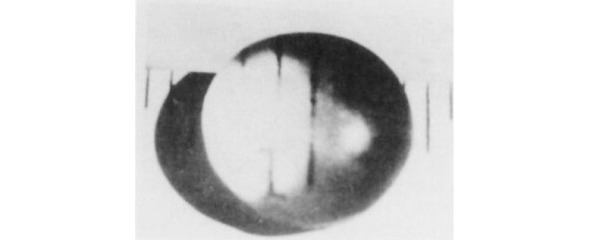
The rock crystal lenses, found by Jannis Sakellarakis in the Ideon Cave (Ida Mount in Crete, near Knossos) — the first diameter of 8 mm, the second 15 mm. Photo by J. Sakellarakis. In fact, fine work, increasing the capacity — nominal 20 + -fold and 10-fold, useful 7-fold and 25-fold — and the question. Why is such a laborious item manufactured? A similar in quality lens was also found in the Palace of Knossos back in 1921 by the famous archaeologist Evans, the discoverer of this object, several more lenses a few years later by Fosdike in the Mavropelio cemetery, and it was this archaeologist who first suggested that they could have had optical use. And, interestingly, several more lenses were found in Amatos (near Limassol) when excavating the temple of Aphrodite among other small gifts to the goddess (gems, beads, amulets), probably refers to the archaic Ancient Greece, that is, the 8th-6th centuries. BC. The lens found in rock crystal from Knossos Palace has a diameter of 14 mm, an increase of 11-fold. Found in 1921 by Evans.
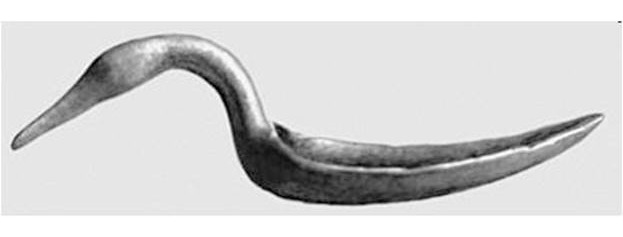
Бесплатный фрагмент закончился.
Купите книгу, чтобы продолжить чтение.